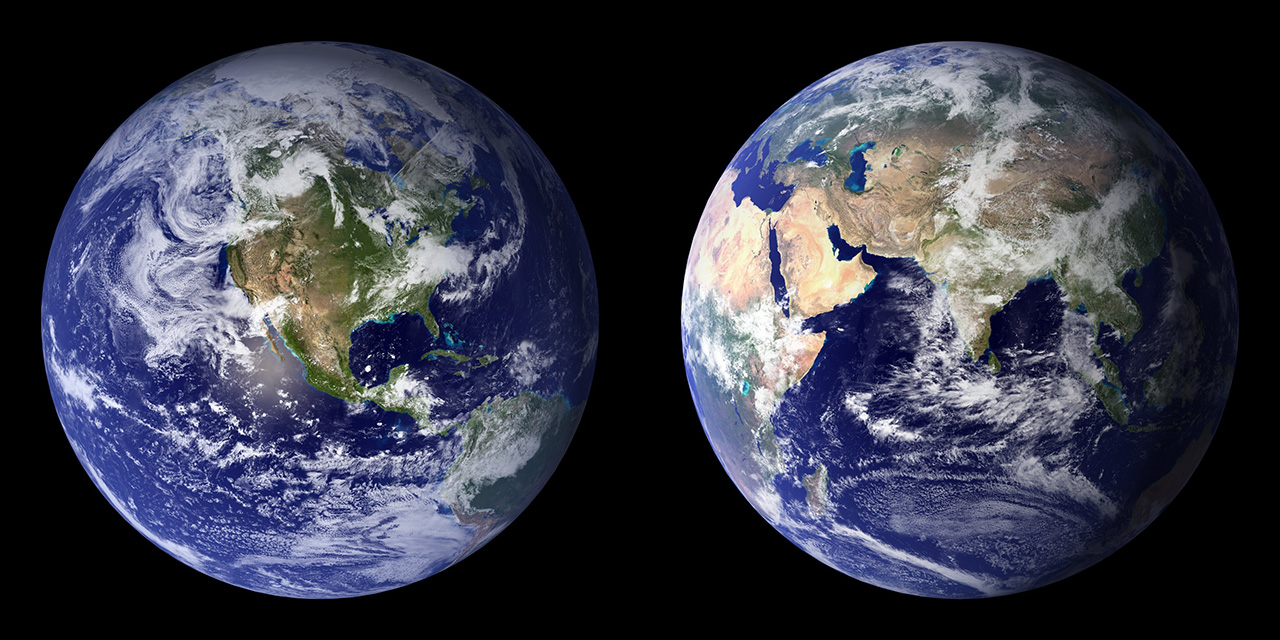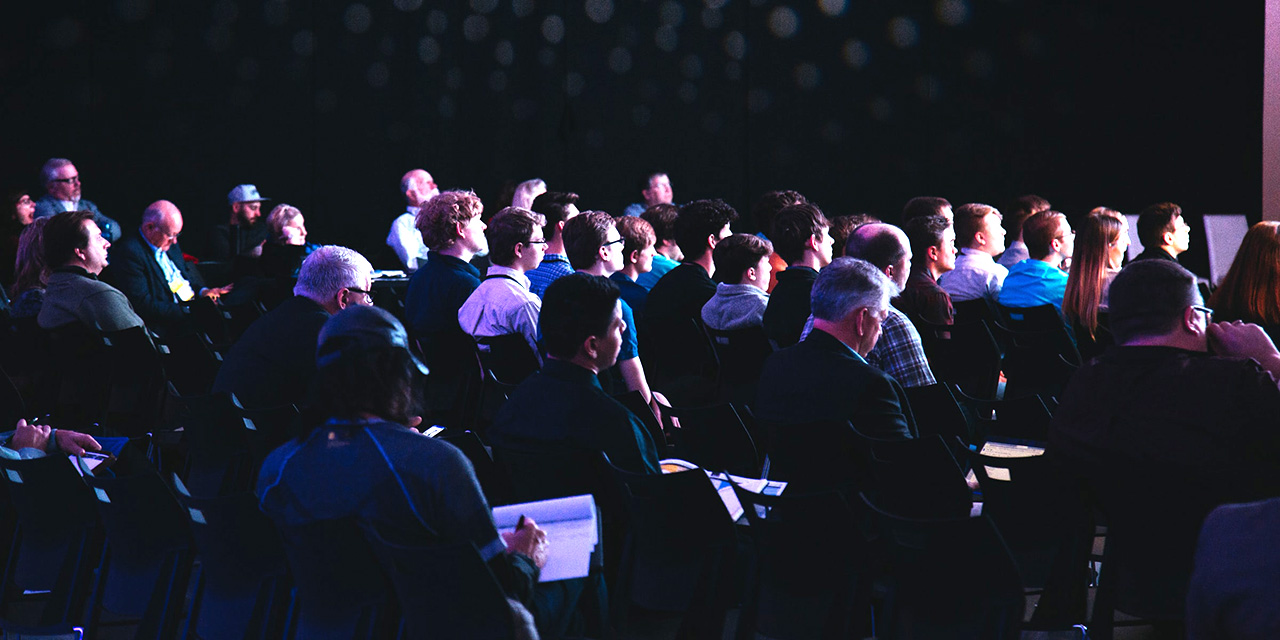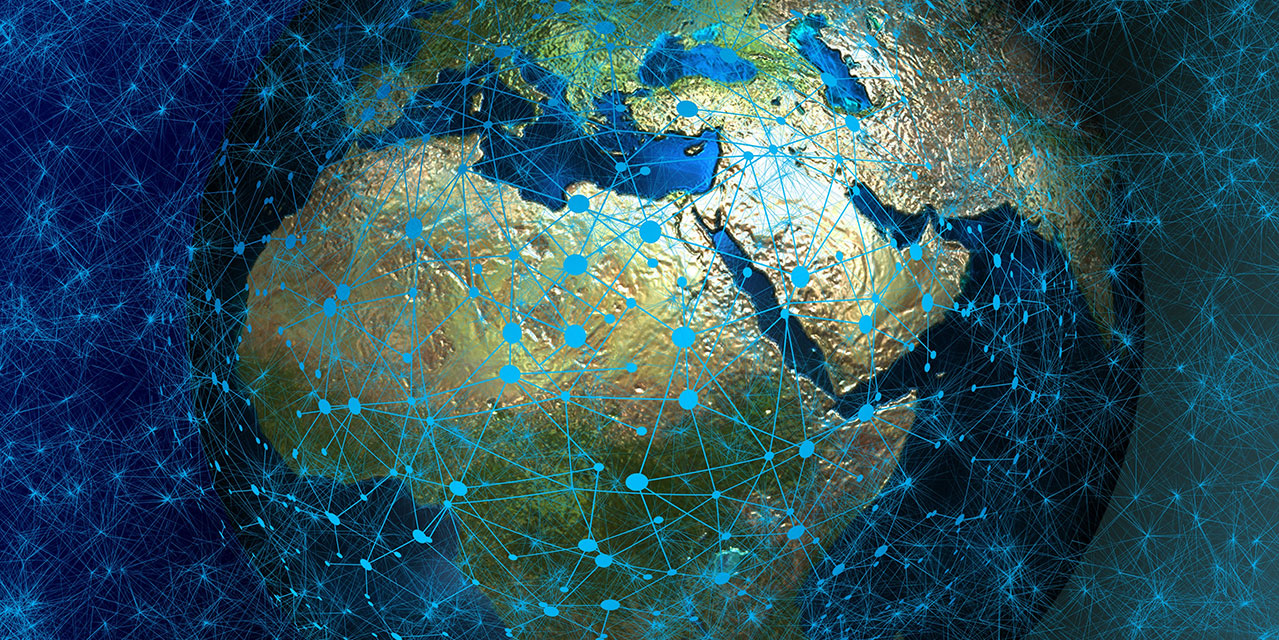GEOKARLSRUHE 2021
virtual conference + on-site excursions
Sustainable Earth –
from processes to resources
19–24 September 2021 | Karlsruhe
DGGV Annual Meeting
• Welcome
• Sessions
• Committee
- Technical Guidelines: Talks, Posters, Chairs & Participants
- Sponsoring & Virtual Exhibition
• EGW
• Registration
• Excursions
• Plenaries / Eve Lecture
• Programme
• Panel Discussions
• Awardees
• Abstracts
• Join DGGV
During the conference:
JOIN PUBLIC LIVE EVENTS FREE
• Contact | Help
- Press | Presse
SILVER SPONSORS
BRONZE SPONSORS
[Conference Hashtag: #geokarlsruhe21]
The Annual Conference of the Deutsche Geologische Gesellschaft – Geologische Vereinigung
(DGGV – The German Geological Society) will be held 19–24 September 2021
at the KIT Karlsruher Institute of Technology in Germany.
Dear Geoscientists and Colleagues,
We are most happy to be able to invite you for GeoKarlsruhe 2021 – DGGV’s annual conference – which will be held online on 19–24th of September 2021 at KIT in Karlsruhe. This year’s theme “Sustainable Earth – from processes to resources” addresses a wide spectrum of scientific topics from fundamental research to application. Besides our virtual conference, you may register for pre- and post-conference onsite field trips, which offer opportunities to meet physically, if Corona-restrictions allow.
As a result of the still uncertain circumstances, we have worked out a hybrid conference solution for you. It will allow us to offer this important meeting in a safe environment and provide you with an interactive format as preferred by the scientific community in virtual conferences. A lot of learnings from GeoUtrecht 2020 and your positive feedback on it went into the planning. We are convinced that the size of meeting and the new technologies to be used will allow you to have an even more positive and fruitful experience in this mid-size meeting – something which is difficult to get from a virtual mega conference nowadays. Note that both, virtual and onsite geological field trips are on offer – likely unique in geoscience conference history.
Thanks to all of our session conveners and the organizing committee we have now a comprehensive scientific program attractive for a broad community. We are also pleased to announce that GeoKarlsruhe 2021 and the 9th European Geothermal Workshop – 9th EGW 2021 – join forces this year (note: independent registration and submission on the same platform). The 9th EGW 2021 will be held on 23rd and 24th of September with an additional field trip on September, 25th. We would also like to thank all of our gold, silver and bronze sponsors which have already made commitments to take part in the 2021 event.
You will find ample opportunities in the conference format which you are used to from f2f meetings. Amongst them are a virtual icebreaker party, public, plenary and session talks, panel discussions, award ceremonies, exhibition hall, coffee shop and virtual networking rooms. In addition, we will offer virtual meeting spaces for your additional events you have in mind (e.g., working group meetings, section meetings, workshops, Young Scientists meeting, general assembly etc.). Please indicate your needs to the organizers, so we can prepare this for you in advance. Local and field trip participants will be able to join the f2f social event physically, something we are all looking forward to again.
The Call for Abstracts is open now including conference registration – as usual via ConfTool. We would like to remind you that this is a great opportunity to become a member of DGGV. Such will allow you to recover part of your conference fees or even join for free as an early bird student member. For further details on all the latest news please see the conference website which is regularly updated for you.
The hybrid conference with virtual sessions allows the geoscience community in the heart of Europe to meet, present and to exchange scientific ideas in a time where geoscientists are in strong demand when it comes to providing answers on major societal questions like climate change, the energy transition, biodiversity, digitalization or the identification of radioactive waste sites in Europe.
We are looking forward to welcome you all to the virtual conferences and onsite field-trips at GeoKarlsruhe 2021.
Yours sincerely,
Christoph Hilgers (KIT) and Jürgen Grötsch (DGGV)
On behalf of the scientific committee
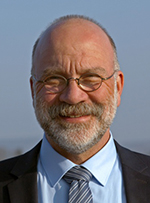
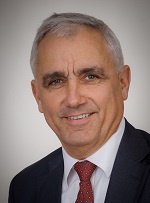
Our Themes and Sessions
Please click on session for more information
1. Earth Surface and Sedimentary Processes
1.1 Sediment routing systems and provenance analysisLaura Stutenbecker1, Hilmar von Eynatten2, Luca Caracciolo3, Guido Meinhold2,41TU Darmstadt, Institute of Applied Geosciences, Germany; 2Georg-August-Universität Göttingen, Geoscience Center, Germany; 3FAU Erlangen-Nürnberg, Geozentrum Nordbayern, Germany, 4Keele University, United Kingdom Keynote: Jan Schönig, Georg-August-Universität Göttingen, Germany The composition of clastic sediments or sedimentary rocks is a result of source area properties, sediment generation and transport processes as well as post-depositional changes. Deciphering the provenance of clastic deposits can therefore provide valuable insights into tectonic, geomorphic, climatic and anthropogenic factors and processes shaping sedimentary systems over different temporal and spatial scales. This session welcomes contributions that investigate (1) the provenance of clastic deposits by analyzing compositional (e.g. mineralogical, geochemical) properties, (2) the processes that modify detrital signals throughout the sedimentary routing system, and (3) the relationships to internal and external forcing mechanisms. This session is co-hosted by the 'Fachsektion Sedimentologie' of the DGGV. 1.2 Advances in understanding processes driving the formation and evolution of sedimentary basinsLiviu Matenco1, Magdalena Scheck-Wenderoth2, Fadi Henri Nader31Utrecht University, The Netherlands; 2GFZ Potsdam and Aachen University, Germany; 3IFPEN Rueil Malmaison, France and Utrecht University, The Netherlands Keynote: Attila Balazs, ETH Zurich, Switzerland This session addresses the dynamics of sedimentary basins at different temporal and spatial scales and aims to bring together a wide range of studies focusing on geodynamics, tectonics and sediment dynamics. Contributions addressing major processes affecting the genesis and evolution of basins are in particular encouraged (from rifting and overlying passive continental margins to orogenic, intra-montane and extensional back-arcs in convergent settings). A wide range of studies are encouraged, aimed at understanding the evolution of sedimentary fill, the underlying crustal and lithospheric -scale dynamics as well as the integration with processes taking place in the source areas, such as active orogens or long-term landscape evolution. We welcome contributions integrating data from different depth levels of the lithosphere with the shallower parts of the basin system as subsidence pattern, stress, vertical motions, erosion and sedimentation dynamics, thermal structure, lithosphere dynamics and (active) faulting by the means of observational studies, numerical and analogue modeling, or their combination. Studies yielding constraints on a variety of conceptual and quantitative models explaining the origin and evolution of basins are also welcomed.Session sponsored by the International Lithosphere Program Task Force VI Sedimentary Basins 1.3 Geodynamic and its influence on topography evolution in Central and Northern Europe: From the Past to the PresentUlrich. A. Glasmacher1, Florian Krob1, Hans-Peter Bunge2, Francois Guillocheau31Heidelberg University, Germany; 2Ludwig-Maximilians-University Munich, Germany; 3Université de Rennes 1, France Keynote: Prof. Dr. Nicky J. White, University of Cambridge, UK Central and Northern Europe has experienced several stages of geodynamic evolution leading to significant changes of topography in the past. Whereas the Caledonian and Variscan topographic evolution is caused by the collision of different plates at their borders the topographic and sedimentological evolution over the last 100 Myr in Central Europe occurs within the plate. Historically, fare field effects of the Alpine orogeny and the rotation of Spain are taken as the geodynamic cause for the change of the Central European Lithosphere. Nevertheless, the initial state and topography of the Central European Lithosphere at 100 Myr is important to understand the Post-100 Myr evolution. Significant exhumation, local subsidence and magmatic activities are key players during the last 100 Myr. Newly dated tectonic movements shed a new light on the multiple structural evolution during this time interval. As salt layers are important throughout the European lithosphere their influence on all processes have to be considered and understood. To unravel the geodynamic causes for the topographic evolution within the Central European plate various data sets have to be combined.Therefore, the session seeks for contributions from Central to Northern Europe including the Alpine Orogeny by using tomography, seismic interpretations, thermochronology, structural interpretations, isotopic dating, sedimentology, salt deposits magmatic and metamorphic petrology and map interpretations. We would appreciate contributions describing the Early Mesozoic geodynamic evolution of Central Europe as well. 1.4 Numerical modelling of sedimentary basins and petroleum systemsRüdiger Lutz1, Susanne Nelskamp2, Ralf Littke31BGR, Germany; 2TNO, The Netherlands; 3RWTH Aachen, Germany Sedimentary basins contain the vast majority of all energy resources, including coal, petroleum, natural gas but also geothermal energy and are also the most important storage sites for anthropogenic solids and fluids. During basin evolution, organic matter-rich sediments and sedimentary rocks are exposed to changing pressure and temperature conditions, which lead to mineralogical and geochemical reactions. Systematic and innovative studies on rock properties, laboratory experiments under well-defined physical and chemical conditions as well as numerical modelling are required to determine rates of transformation, but also fluid flow at different scales.We invite contributions to this session dealing with sedimentary systems and their constituent elements. We welcome basin modeling studies from crustal to reservoir scale, studies on various aspects of the petroleum system, e.g. source rock deposition, maturation, petroleum generation, expulsion and biodegradation, studies on temperature and heat flow evolution in sedimentary systems. 1.5 Dating and Rating Landscape Evolution with Geochemical Methods on Geomorphic to Geologic Time ScalesAndrea Madella, Sarah Falkowski, Paul R. Eizenhöfer, Cristoph GlotzbachUniversität Tübingen, Germany Keynote: Apolline Mariotti, Centre des Recherches Pétrographiques et Géochimique - Université de Lorraine, France: Non-linear forcing of climate on denudation in the Alps over the last 75 ka The Earth's surface is under constant change. Tectonic, climatic, biogenic and anthropogenic forcings have a measurable impact on erosion, weathering and surface uplift. Information on the interactions among these processes and their spatio-temporal distribution can be inferred from observations of the available geologic archives. These involve, among others, the morphology and the geochemical-mineralogical composition of exposed bedrock, sedimentary products and soils. In order to successfully predict future landscape responses, it is therefore important to investigate these archives and to quantify the timing and rate of past landscape changes in response to the different forcings. In this session, we gather contributions involving state-of-the-art applications of geochronologic, thermochronologic and geochemical methods, aiming to quantify dates and rates of landscape change. In particular, we welcome any field-, laboratory- and/or modeling-based study, covering a range of timescales (hundreds to millions years), spatial scales (hillslope, catchment, orogen) and techniques (e.g. cosmogenic nuclides, thermochronology, luminescence, isotopic dating, etc...). 1.6 Stratigraphic Modeling and Lithosphere DynamicsMichael SuessUniversity of Tuebingen,Germany Sedimentary Basins record the evolution of the lithosphere in the deposited sediments and their stratigraphic architecture. Stratigraphic modeling, coupled with dynamic geomechanics simulations allow to test hypothesis about crustal evolution calibrated by geochronology and mineral provenance analysis. 1.7 Critical Metals in the EnvironmentDavid M. Ernst, Franziska Klimpel, Dennis Kraemer, Anna-Lena ZocherJacobs University Bremen, Germany Keynote: Jörg Schäfer, Université de Bordeaux, France In the past years, certain trace elements hitherto only used as geochemical proxies have gained increasing societal and economic importance due to their restricted and insecure supply and high importance for high-tech applications such as enabling technologies. These critical metals are now included in the list of critical raw materials, published by the EU in 2020. Critical metals are, for example, the rare earth elements and the platinum group elements, but also more “exotic” ones like antimony, gallium, germanium, hafnium, indium, scandium, tantalum, tungsten and vanadium.Although the increasing application of these metals results in a growing input from anthropogenic sources into the environment, knowledge of their environmental behaviour, their bioavailability and their (eco)toxicity are still in their infancy. This limited knowledge is partly caused by the fact that many of these metals occur at very low concentrations in the natural environment, posing additional analytical challenges.This session collects contributions related to critical high-technology metals in the environment, especially, but not limited to, studies on a) their analytical determination in various matrices, also including analysis of plant and animal tissues, b) their geochemical behaviour in Earth’s surface systems, i.e. the critical zone, c) their anthropogenic input, d) studies on bioavailability and (eco)toxicity, and e) rehabilitation of contaminated sites. We especially welcome contributions from Early Career scientists and from the EU Innovative Training Network "PANORAMA” (euroPean trAining NetwOrk on Rare eArth elements environMental trAnsfer: from rock to human). 1.8 Earth Surface Dynamics and Processes under Climatic and Tectonic controlsMichael Krautblatter1, Aaron Bufe2, Tofelde Stefanie31TU München, Germany; 2GFZ Potsdam, Germany; 3University of Potsdam, Germany Earth's surface is subject to a complex interplay of tectonic, atmospheric, and biologic forcing and processes of chemical and physical weathering and erosion. In turn, surface processes can modulate climate, tectonics, and life by the cycling of sediments, water, nutrients, and carbon. Predicting the sensitivity of the Earth's surface to changes in climatic or tectonic forcing, therefore requires an understanding of individual processes as well as their interactions across spatial and temporal scales. Here we invite studies that use field, experimental, and modelling approaches to constrain the patterns and rates of erosion, weathering, and transport of solids and solutes across the Earth surface, and to assess their sensitivity to climatic, tectonic, or biologic change. 1.9 Depositional and diagenetic processes in carbonate systemsAnneleen Foubert1, Chelsea Pederson2, Lars Reuning31University of Fribourg, Department of Geosciences, Switzerland; 2Ruhr-University Bochum, Institute for Geology, Germany; 3CAU Kiel, Institute of Geosciences, Germany Keynote: Chris Perry, Chair in Tropical Coastal Geoscience, University of Exeter, UK Modern carbonate systems such as reefs provide livelihood and ecosystem services, such as coastal protection and food security, for hundreds of millions of people. Fossil carbonate systems are important archives of environmental change and form a valuable resource for renewable energy exploration and exploitation such as geothermal heat but also for CO2 sequestration. Over the past decades, our understanding of carbonate systems has improved by the combination of traditional fieldwork with new techniques such as 3D seismic analysis, modeling, high-resolution 3D microscopy, and advanced geochemical methods. This session seeks to present studies applying state of the art methodologies in addressing open questions in the broad field of carbonate sedimentation and diagenesis. We especially encourage contributions to the following themes: 1) Anthropogenic influences on modern carbonate systems or carbonate secreting organisms, 2) Impact of diagenesis on palaeo-environmental and palaeoclimatological carbonate archives, (3) Biogeochemical and physicochemical processes driving carbonate precipitation and alteration processes, and (4) Petrophysical and geophysical characterization of carbonate systems. 1.10 Reconstructing geological records of sea-level changeAnke Friedrich1, Maria Mutti2,1Ludwig-Maximilians-Universität München, Germany; 2Potsdam University, Germany Keynote: Jacky Austermann, Department of Earth and Environmental Sciences, Columbia University, USA This session offers a floor for discussion of novel approaches to interpret geological records of sea-level change on a range of geological time scales. We solicit contributions from a wide range of geological, sedimentological, stratigraphical and observational geophysical records bearing on the question of controls of sea-level fluctuations over geological time scales. While sequence stratigraphic concepts have provided an essential tool in developing chronostratigraphic frameworks, their do not link to underlying geological, isostatic, and geodynamic processes in obvious ways. New integrated approaches might be required to improve our ability to integrate the growing body of geological and sedimentological information. Contributions to this session might provide new insights into the interpretation of existing sea-level records, or they might suggest new approaches of how to link interdisciplinary marine and continental records, in both clastic and carbonate systems. Studies that allow the linkage of on-shore and off-shore records are particularly welcome.
2. Magmatic and Metamorphic Systems
2.1 Carbonatites and alkaline rocksMichael A.W. Marks1, Benjamin F. Walter2, R. Johannes Giebel31University of Tübingen (Germany); 2Karlsruhe Institute of Technology (Germany); 3Technical University of Berlin (Germany) & University of the Free State (South Africa) Keynote: Michael Anenburg, Australian National University, Australia This session thematizes the formation, evolution and economic importance of carbonatites and alkaline rocks. These play an important role for our society, as they contain exceptional high levels of critical raw materials, such as REE, Nb, P and F, to name a few. However, to understand how such deposits form, we need to understand how their rocks and mineral assemblages formed in space and time.Although our knowledge about the formation and mineralization as well as the magmatic and post-magmatic modification of carbonatites and alkaline rocks strongly improved over the last decades and the extraction of related raw materials could be steadily refined, there are still many open questions that need to be addressed. We encourage participants to submit and present their studies relating to carbonatites and alkaline rocks in this sub-session and to discuss and network their research. The scope of this session covers the formation, the ascent and the emplacement, but also the mineralization, differentiation and alteration of these unique rocks as well as their exploration, exploitation and processing. Experiments and numerical calculations are as welcome as field work studies and analytical investigations.2.2 Earth’s sustainable mantleMaria Kirchenbaur1, Stephan König21Institute of Mineralogy, Geochemistry, Leibniz University Hannover; 2Department of Geosciences, University of Tuebingen, Germany Keynote: Prof. Sebastian Tappe, University of Johannesburg The mantle is Earth’s largest silicate reservoir and one of its fundamental characteristics is the chemical and isotopic heterogeneity that extends down to the mineral scale. These various-sized mantle domains reflect different proportions of multiple, superimposed depletion and enrichment events that affected the mantle in time and space. As such, each of these domains may therefore retain different and potentially unique information regarding the extent of mantle depletion as well as the role and nature of enrichment by crustal recycling. Owing to the reaction with other surface reservoirs before subduction, mantle domains that were enriched by recycled crust may additionally record ancient ocean-atmospheric conditions. The sustainable mantle thus maintains a certain rate of exchange between Earth’s interior and exterior, stores compositional heterogeneities that relate to this exchange and partly mirror global conditions of ancient Earth’s surface. This session welcomes contributions that address different scales, features and implications of the chemical and isotopic heterogeneity of the mantle, its role for geological resources and the perspective of mantle and mantle-derived components to elucidate ancient surface conditions that shaped a habitable planet over time.2.3 Geo-bio-interaction in oceanic hydrothermal systemsEsther Martina Schwarzenbach1, Wolfgang Bach21Freie Universität Berlin, Germany; 2Universität Bremen, Germany Keynote: Florence Schubotz, Universität Bremen, MARUM, Germany Hydrothermal vents in deep and shallow ocean environments are geochemical conduits that link Earth’s interior with the oceans. These sites of active hydrothermal vents are distributed throughout the global network of ocean ridge spreading centers to ridge flanks and cool off-axis diffuse vent fields in ocean basins and occur in diverse lithological settings – including basalts, ultramafic rocks and sediments – and temperature regimes. These vents are loaded with nutrients from hydrothermal and magmatic activity that drive a vast sub-seafloor biosphere. Particularly near ocean ridge spreading centers magmatism and/or residual mantle heat serve as drivers for abiogenic mineral reactions generating reduced chemical species, which can be utilized by chemolithoautotrophic microbes. Additionally, microbial chemosynthesis within fluids drives near-vent productivity and support animal communities that inhabit these ecosystems. Water-rock-microbe interaction within the oceanic lithosphere considerably affects ocean water chemistry and the chemical composition of the oceanic lithosphere, effectively controlling global element cycles. This session seeks to combine new findings from a multi-disciplinary research community investigating the complex interplays between hydrothermal, magmatic and microbial processes in ocean floor settings, the diversity and extent of the shallow and deep subsurface biosphere, life in extreme environments, or their impact on global geochemical cycles. We also welcome contributions that study ongoing alteration processes and microbial activity in continental crust or oceanic lithosphere exposed on land, or ancient processes preserved in ophiolite sequences, from modern to Archaean systems. 2.4 Magmatic and metamorphic petrologyArmin Zeh1, Dominik Gudelius1 1Karlsruher Institut für Technologie (KIT), Institut für Angewandte Geowissenschaften, Mineralogie und Petrologie, Karlsruhe, Germany The Earth’s crust and related mineral resources were formed and modified by magmatic and metamorphic process through Earth’s history. Understanding of these processes in space and time is therefore of fundamental interest for Geoscientist and Society. This session deals with all aspects of magmatic and metamorphic rocks formed through Earth’s history from global to nanoscale. Presentations are welcome dealing with (i) experimental petrology, (ii) field-based studies on magmatic and metamorphic rocks and processes in all kind of geological settings, from crust to mantle and back, (iii) thermodynamic and kinetic modelling, and (iv) related geochronological aspects.
3. Mineral Physics and Chemistry
3.1 Reaction mechanisms and process monitoring at mineral-fluid interfaces in anthropogenic settingsMartin Dietzel1, Tobias Kluge2, Ronny Boch3,1, Florian Mittermayr41Institute of Applied Geosciences, Graz University of Technology, Graz (Austria); 2Institut für Angewandte Geowissenschaften, Karlsruher Institut für Technologie, (Germany); 3Geoconsult ZT GmbH, Puch bei Hallein (Austria); 4Institute of Technology and Testing of Building Materials, Graz University of Technology, (Austria) Keynote: Prof. Dr. Susan Stipp, Technical University of Denmark Department of Physics, Denmark The interdisciplinary approach of combining expertise in environmental, geochemical, civil engineering and material sciences realizes a new level of in-depth process understanding of the prevailing biophysicochemical reaction mechanisms occurring at mineral-fluid interfaces in various anthropogenic settings such as (geo)technical and construction surroundings. Proposed investigations may focus on the interaction of solid - liquid - gas interfaces, on proxy-based forensic reconstruction and adaptation of variable and possibly unfavorable environmental and operating conditions of different spatial and temporal scales. The advanced process understanding of mineral – environment (abiotic and/or biotic) interactions, combined with newly developed and state-of-the-art environmental monitoring tools (e.g. sensor-based high-resolution data acquisition) enables the target-oriented and customized optimization and development of sustainable material alteration prevention strategies (e.g. advanced inorganic binder systems) and durable mineral-based construction materials, as well as measures against unwanted mineral formation (e.g. plugging of geological reservoirs or drainage systems). In this scope, contributions on advanced environmental monitoring strategies and tools (e.g. sensor systems, isotope/elemental tracers), processes at critical fluid-solid interfaces and high-resolution chemical, (micro-)biological, mineralogical and micro-/nanostructural analytics (e.g. FEG-EPMA, X-ray microtomography), as well as field-based testing, laboratory experiments and modelling approaches are cordially invited.
4. From Microstructures to Tectonics
4.1/2 Tectonic Systems (TSK Open Session)Niko Froitzheim1, Dennis Quandt21Universität Bonn, Germany; 2Karlsruhe Institute of Technology 4.1: Veins are common structures in rocks and occur in different geological settings ranging from continental to oceanic crustal environments. They form by mineral precipitation from a fluid phase within a dilatational site or due to displacive mineral growth. Veins may form under a range of temperatures and pressures and precipitate from fluids of different origin. As a result, vein structures and microtextures as well as mineralogical, elemental, and isotopic compositions vary depending on the geological environment and local to regional physicochemical conditions. Therefore, veins are ubiquitous structures in the geological record and represent an insightful geological material and tool to answer diverse research questions. In previous studies, vein microtextures and geochemical compositions of vein minerals have been widely used to reconstruct kinematic histories of rocks and to quantify the physicochemical conditions under which veins formed, respectively. Thus, this session invites contributions from structural geology using veins as stress and strain indicators, geochemical studies investigating elemental and isotopic vein mineral compositions such as fluid-rock interactions, laboratory as well as numerical experiments simulating natural vein microtextures, and applied geosciences dealing with ore mineralization hosted in veins. 4.2: We invite contributions from the fields of tectonics, structural geology, and crystalline geology. Regional and process-oriented studies from all kinds of active or fossil tectonic settings are welcome – rifting, ocean spreading, subduction, collision, transform, as well as intra-plate deformation. Studies dealing with the development of methods related to the deformation of crust and lithosphere from the micro-scale to plate scale are also invited.
5. Climate – Present, Past and Future
5.1 The imprint of astronomical climate forcing: geochronometer and paleoclimate archiveChristian Zeeden1, Stefanie Kaboth-Bahr2, Anna-Joy Drury3, Qiang Fang4, Mehrdad Sardar Abadi11Leibniz Institute for Applied Geophysics, Germany; 2Universität Potsdam, Germany; 3University College London, UK; 4China University of Geosciences (Beijing), China Keynote: Dr. Daniel Veres The pacing of the global climate system by variations in orbital parameters is clearly demonstrated in the timing and specific patterns of various geoarchives, including sapropels, glacial/interglacial cycles and many other examples. The imprint of astronomical cycles can be used as high-precision geochronometer, and as paleoclimatic information. Extreme events can especially be expected to relate to extremes in insolation. We invite contributions utilizing the imprint of Milankovic cycles as preserved in the geological record in any way, including the often poorly understood mechanisms that translate this forcing into geoarchives. Submissions exploring orbital time scales, proxy data and/or modelling work are welcome; we aim to bring together studies focused on global and regional climate responses to astronomical forcing at different time scales. 5.2 Geological archives and proxies of polar environmental change: Data basis for constraining numerical simulationsJohann Philipp Klages1, Juliane Müller1,2,3, Gerhard Kuhn11Alfred-Wegener-Institut Helmholtz-Zentrum für Polar- und Meeresforschung, Bremerhaven, Germany; 2MARUM – Center for Marine Environmental Sciences, Bremen, Germany; 3University of Bremen, Faculty of Geosciences, Bremen, Germany Keynote: Dr. Evan Gowan, Kumamoto University, Japan In recent years, geoscientific data provided considerable insights into the environmental past of polar regions. Conventional coring, seafloor drilling, and terrestrial campaigns led to increasing data availability of past environmental and ice-sheet change at both poles. As these are the regions most sensitively reacting to climatic changes, reliable datasets of past variations are critical for constraining numerical models aiming at simulating future changes more robustly. We therefore invite contributions from colleagues working in marine and terrestrial settings in both polar regions on various timescales. We particularly ask for contributions that integrate field data with numerical modeling, i.e. utilize past variations as target values for calibrating numerical simulations in order to improve their predictive capabilities for future scenarios. 5.3 Advances in terrestrial and marine carbonate archives – novel proxies and innovative techniques to decipher past climate variabilityDana Felicitas Christine Riechelmann1, Maximilian Hansen1, Sophie Warken2, Michael Weber11Johannes Gutenberg University Mainz, Germany; 2Heidelberg University, Germany Keynote: Dr. Franziska Lechleitner, University of Bern, Switzerland The use of carbonate-based paleoclimate archives has gained increasing importance to obtain reliable and detailed information on past climate and environmental variability in order to better understand the modern climate regime and the influence of anthropogenically induced global warming. In the last decades, the diversity of geochemical proxies available in carbonate palaeoclimate archives have emerged rapidly and significantly. Trace elements and traditional stable isotopes of oxygen and carbon have been supplemented with numerous non-traditional stable isotope systems such as B, Li, Ba, Mg, Ca, Sr, U, N, Δ17O, Δ47.In addition, the study of organic matter in carbonaceous archives and investigation of different biomarkers has massively expanded over the last years. Most importantly, recent developments in analytical techniques allow for improved precision, unprecedented resolution or smallest sample amounts. Furthermore, sophisticated isotope enabled diffusion-reaction models as well as high resolution experimental approaches significantly improved our understanding of the underlying fractionation processes. All these novel geochemical proxies and innovative methods open new advances towards qualitative and quantitative reconstruction in terrestrial and marine palaeoclimate studies and allow for multi-proxy approaches at different spatial and temporal scales.This session aims to bring together researchers from different fields of palaeoclimate research to share their knowledge, and allow inter-disciplinary exchange in order to apply these proxies to other palaeoclimate archives. We especially invite early career researcher to submit their abstracts to this interdisciplinary session. This will inspire both young researcher as well as senior scientists to apply new multi-proxy research approaches to study past climate variability.
6. Advances in Computational Geosciences
6.1 Applications in 3D Geological ModellingRouwen Johannes Lehné1, Roland Baumberger2, Stephan Steuer31HLNUG, Germany; 2Swisstopo, Switzerland; 3BGR, Germany Over the last decades, 3D geological modelling has become a standard in hydrocarbon exploration and production, has been adopted and is developing towards a systematic effort by geological surveys, and is on the verge of being able to properly handle the structurally complex settings in which the mining sector operates. New, exciting possibilities are arising and new application domains are opening up, which challenges geomodellers to integrate data and methods from different domains (e.g. remote-sensed and subsurface data), and to deliver integrated content (e.g. urban underground infrastructure and geology). In this process, several hurdles must be overcome, i.e., developing standards, harmonization, integration of data, storing and sharing content in a structured manner, and developing services. In the process challenges are manifold, and so are the solutions.This session therefore is looking for contributions addressing the wide field of geological 3D-modelling and associated topics such as data modelling & data storage and sharing systems. We especially encourage the younger generation to present and are glad to announce a special block within the session that is dedicated to honor selected student degree theses and reward them with a cash prize. For more details please visit the website of the section Geoinformatics (www.fgi-dggv.de).
7. Advances in GeoAnalytics
7.1 Spectroscopic methods in modern geosciencesMelanie Kaliwoda1, Jörg Göttlicher21SNSB /LMU, Germany; 2KIT, Karlsruhe Institute of Technology Keynote: Prof. Dr. Ian Coulson, University of Regina (Canada), Department of Geology, Canada Spectroscopic methods with their capability to gain information on atoms and molecules are becoming more and more relevant in earth sciences in order to open up new fields of research and to solve problems in the various scientific disciplines. Therefore, it is important to have an exchange, which methods are especially suitable for different requirements. The session Spectroscopic methods in modern geosciences is addressed to all geoscientific researchers who use spectroscopic technologies such as Raman, Infrared (IR), UV/Vis, X-ray, Electron and Nuclear Magnetic Resonance (NMR) Spectroscopy as well as Mass spectrometry (MS). Also contributions of investigations that involve a spectroscopic method not listed here are highly welcome. 7.2 New frontiers in ICP-MS and IRMS analytics - Chances and challenges of high-resolution ICP-MS and IRMS methodsElisabeth Eiche, Tobias KlugeKarlsruhe Institute of Technology, Germany Continuously improving ICP-MS and IRMS techniques steadily allow smaller sample sizes, higher spatial resolution and the investigation of unconventional isotopes or isotopologues (e.g., ∆48 in carbonates and CO2). These technical advances pose new challenges in sample preparation, handling, analytical procedures, data evaluation and upscaling.We welcome all contributions that address novel aspects in the use of ICP-MS or IRMS systems, e.g., unconventional isotope systems, high-resolution studies, or the quest for high precision and accuracy, but are not limited to those examples.
8. Geophysics
8.1 Urban exploration using Distributed Acoustic Sensing (DAS)Christopher Wollin1, Andreas Wüstefeld2, Charlotte Krawczyk11German Research Center for Geosciences, Germany; 2NORSAR Keynote: Verónica Rodriguez Tribaldos, Lawrence Berkeley National Laboratory, USA In contrast to traditional point-like seismometers, Distributed Accoustic Sensing (DAS) can probe the seismic wavefield along a one-dimensional trajectory at unprecedented spatial density over very long arc lengths and at very high temporal sampling rates. From onshore hydrocarbon exploration the technology has spread into numerous other applications ranging from vertical seismic profiling over onshore and offshore seismic monitoring to exploration and site characterization in dense urban agglomerations using dark telecommunication fibers. As telecommunication grids are dense, particularly the latter has the potential to facilitate urban exploration at a lowered cost and thus to shed light on the often insufficiently known local geology with advantageous consequences for the quantification not only of natural risks but also of financial risks for instance during geothermal project development. Furthermore, the durability and low-maintenance requirements of fiber cables make them ideal instruments to monitor CO2 and nuclear waste storage sites. In this session we invite recent studies that apply or evaluate DAS particularly but not solely in the exploration of urban areas. These may include for instance the instrumentation and geo-referencing of fibers, theoretical description of their coupling with the underground, active or passive seismic experiments and monitoring. We also encourage contributions on data analysis techniques. 8.2 Gravity-based density models and their applicationsÁngela María Gómez-García1, Judith Bott1, Magdalena Scheck-Wenderoth1, Hajo Götze2, Wolfgang Szwillus21German Research Centre For Geosciences GFZ; 2Christian-Albrechts-Universität zu Kiel Keynote: Dr. Bart Root Gravity measurements contain important information about the subsurface at every spatial scale. Satellite missions provide highly accurate, global measurements, that allow building and testing 3D models of the Earth even for regions where other geophysical measurements are sparse. Depending on the envisaged model resolution and application, gravity data from regional or local surveys (e.g. ship and airborne) can be incorporated to provide higher resolution. However, solutions to the gravity inverse problem are non-unique and constraints by independent geological and geophysical observations need to be integrated to develop reliable subsurface density models. Such models, in turn, provide insights into subsurface variations in composition and thermo-mechanical state.In this session, we welcome contributions that integrate gravity and/or gradient data (at all scales) with other geophysical measurements and geological information to better understand the structure, properties and processes of the Earth’s subsurface. Hence, we would like to discuss diverse applications, from global scale, where mantle properties are assessed, down to the reservoir scale. We also welcome more technical contributions that address related topics like innovative joint inversion methods, model uncertainty estimation and determinations of parameter sensitivities, as well as temporal variations of the gravity field, and new interpretation software and techniques. 8.3 Mineral and rock magnetism for reservoir characterizationAgnes Kontny, Katarzyna DudziszKIT, Germany Keynote: Andrea Biedermann, Universität Bern, Institut für Geologie, Schweiz Magnetic properties of rocks show a wide range of geoscience applications and they are rapid and non-destructive to measure. Magnetic susceptibility is one of the most common magnetic parameters that allows to distinguish between different rock types and to understand geological processes that are related to Fe-mineralogy. The physical basis for the discrimination is the nature of magnetic minerals, their distribution, and grain size. Thus, magnetic methods show great potential for reservoir rock characterization, fabric determination, ore deposits, environmental issues, and even pore fabric studies. We particularly encourage contributions dealing with reservoir characterization applying magnetic methods from all areas of geology including method developments and applications of magnetic methods in all kinds of geological reservoir characterization. 8.4 Induced Seismicity and Wind Turbine Emissions: Sources – Monitoring – Modelling - MitigationJoachim Ritter1, Stefan Baisch2, Andreas Rietbrock11Karlsruher Institut für Technologie; 2Q-con GmbH The issue of seismicity induced by human activities, e.g. through fluid injection (waste water disposal, hydraulic fracturing), has become increasingly important with technology upscaling. In some regions of the world, seismicity associated with the exploitation of hydrocarbons exceeds natural earthquake activity. Monitoring of induced seismicity with local networks is a key element for managing induced seismicity risks. At the same time there is an increasing number of wind turbines and the associated increase of ground vibrations. This combination complicates ground motion analyses and can disturb earthquake monitoring. A lot of research is ongoing in these topics and we want to provide a platform for exchanging latest results and ideas. Therefore, we invite contributions from research on induced seismicity and/or technically induced seismic signals covering theory, observations and experimental aspects.
9. Groundwater Resources
9.1 Groundwater Availability: Current Trends and Challenges in Groundwater Resources Exploration and ManagementNico Goldscheider1, Traugott Scheytt21Karlsruher Institut für Technologie (KIT), Germany; 2TU Bergakademie Freiberg, Germany Keynote: Dr. Bridget R. Scanlon, University of Texas, USA Groundwater resources are critical for the freshwater supply of humanity, for drinking water purpose and agricultural irrigation. At the same time, many aquatic and terrestrial ecosystems are directly or indirectly dependent of groundwater. Climate change, population increase and the resulting changes in land use and water demand exert increasing pressure on these valuable but vulnerable groundwater resources, often resulting in declining water tables and spring discharge, saltwater intrusions in coastal aquifers, reduced environmental baseflow and, consequently, deterioration of ecosystems and water-use conflicts. This session addresses all aspects of groundwater availability, both at global scales and in relevant regional case studies, in different types of aquifers – unconsolidated aquifers, fractured rocks and karst aquifer systems, with a particular focus on the Alpine and Mediterranean regions. Contributions presenting new experimental, conceptual and modelling methods and tools to address different aspects of groundwater availability across all scales are also welcome. 9.2 Groundwater quality: new developments on understanding transport and mobility of contaminants related to anthropogenic impactsTobias Licha1, Ferry Schiperski21Ruhr-Universität Bochum; 2TU Berlin, Germany Keynote: Mario Schirmer, EAWAG, Switzrland Groundwater quality is widely compromised by anthropogenic impact. This becomes evident by the presence of numerous anthropogenic organic and inorganic contaminants in groundwater. Contaminants are of widespread origin. They enter the groundwater associated to different processes such as sewer failure, agricultural activities or contaminated industrial sites.Understanding the input mechanism, transport, attenuation and degradation processes in short and long term is crucial for sustainable groundwater development.Although unwanted, contaminants even in smallest quantities might provide information for locating their input or allow for understanding transport and attenuation processes within aquifers. In addition, microbial communities might not only be harmful but assist in the degradation of harmful substances.We call for contributions that deal with groundwater quality in all type of aquifers (e.g. alluvial, fractured, and karst aquifers). We welcome topics such as urban groundwater, new tools for water quality characterization, organic micropollutants in groundwater, microbial contaminants (such as bacteria, virus, and protozoans), groundwater remediation, and water quality monitoring. 9.3 Alpine HydrogeologyIngo Sass, Rafael SchäfferGeothermal Science and Technology, Institute of Applied Geosciences, TU Darmstadt, Germany Keynote: Prof. Dr. Stefan Wohnlich, Ruhr-Universität Bochum, Germany This session is thematically broad and include all topics related to research on the hydrosphere of alpine regions of the world both in humid and arid climate. We welcome contributions to topics related for example to - effects of global warming on glaciers and permafrost,- folded and structured karst aquifers and hard rock aquifers,- groundwater and drinking water supply,- water balance of small and large catchments,- hydropower generation,- coupled hydrogeological model studies, as well as- regional hydrogeological field studies. We believe that this session fits well to the overall topic chosen for GeoKarlsruhe 2021, as this session connects the resource water with several processes in mountain areas. 9.4 Hydrogeology of arid environmentsStephan Schulz, Nils MichelsenTU Darmstadt, Germany Keynote: Dr. Georg Houben Most (semi-)arid regions are characterized by limited surface water and hence rely on other sources. While unconventional resources such as desalinated seawater can be a valuable option for domestic supply in coastal areas, groundwater withdrawal is still the only relevant option to produce volumes that can satisfy the demand of water-intensive sectors, above all irrigated agriculture.In many areas, however, groundwater resources are over-exploited, i.e., more water is abstracted from the aquifers than is naturally replenished. Considering global changes such as population and economic growth, and the predicted expansion of dry areas due to climate changes (e.g. in the Circum-Mediterranean region), the pressure on groundwater resources will be even amplified.This situation calls for a better water management, which is in turn dependent on an adequate hydrogeological understanding comprising both, available quantities and water quality. We hence envisage a session that covers a broad spectrum of hydrogeological aspects of (semi-)arid environments. Sub-topics could include, but are not limited to, groundwater recharge estimations, flow modelling, hydrochemical studies, and isotope applications. Interdisciplinary contributions, linking hydrogeology to neighboring disciplines, are encouraged.
10. Geoenergy for Future
10.1 Geotechnical Use of Deep Groundwater SystemsSebastian Fischer1, Johann-Gerhard Fritsche21BGR, Germany; 2HLNUG, Germany Keynote: Dr. Gabriela von Goerne In recent years, the deep geological underground gained more and more attention as it offers various reservoirs potentially applicable for different geotechnical use options, e.g. deep geothermal energy or geological storage of CO2 and H2/energy. In this context, knowledge about the occurrence as well as the understanding of controlling processes of deep groundwater systems is important in order to guarantee their sustainable long-term use.Deep groundwaters have unique chemical and physical properties. Besides higher temperatures, they are often characterised by higher salinities. Higher temperatures as well as higher salinities may potentially cause problems during geotechnical applications. At least handling of deep groundwaters necessitates specific efforts and expenses, e.g. to prevent scaling and corrosion of technical components. While chemical compositions may vary even within one hydro-stratigraphical unit, profound knowledge of groundwater dynamics, regionally dominating forces and processes as well as hydraulic properties is often limited. Hence, predictions of geotechnical use potentials of deep groundwater systems at individual sites are complex and often unreliable.We specifically, but not only, call for contributions that deal with collecting and analyzing data of deep groundwaters and/or use numerical models to consolidate the understanding of the chemistry as well as the dynamics, driving forces and dominating processes in the deep subsurface. We also encourage submissions that specifically address the unknowns and discuss innovative options for the future.10.2 Material use of geothermal watersValentin Magnus Goldberg, Tobias Kluge, Fabian NitschkeKarlsruhe Institute of Technology, Germany Keynote: NN The production of geothermal energy requires the circulation of large volumes of thermal brines reaching up to several 100 L/s. These brines are the product of long-time water-rock interactions at a high temperature and depth leading to various water compositions. The contained ions have been used for the chemical characterization of a reservoir and are further a challenge for the power plant operator due to the possibility of uncontrolled mineral formation. The chemical analysis of the waters and the related precipitates have shown that the waters can contain critical and strategic mineral commodities at various concentrations. According to known standards of raw material extraction, these are not classic deposits due to their low concentrations. However, in consideration of the high annual volumes circulating in geothermal systems, relevant amounts of different raw materials are in theory extractable. An advantage of the geothermal brines is that the elements of interest are already dissolved in the water and do not have to be extracted from the rock first. Furthermore, a geothermal power plant provides decentralized heat and energy for further refinement of the raw materials. The implementation of a cost-effective and deployable mineral recovery in the geothermal cycle can thus improve the economics of geothermal energy and open up a new raw material market. 10.3 Uncertainty Characterisation in Geothermal ExplorationJeroen van der Vaart, Matthis Frey, Kristian Bär, Ingo SassTU Darmstadt, Germany Keynotes: Dr. Denise Degen, RWTH Aachen, Germany With the urgent need to quickly reduce CO2 emissions, deep geothermal energy can provide an indispensable contribution in the future energy mix. To encourage future projects, it is essential to significantly decrease the exploration risks of geothermal projects. This reduction should encourage investments, increase the probability of success and decrease surface impact to communities. Ranging from direct exploration risks to surface implications for communities, this session is directed to uncertainty quantification and risk reduction e.g. geological modelling, novel exploration as well as reservoir testing and monitoring techniques. Armed with this knowledge, better decisions can be made for project developments, like selection of drilling targets, reservoir operations or mitigations efforts. We invite contributions on geological, geophysical and reservoir engineering aspects of uncertainty quantification and risk reduction within Geothermal energy.10.4 Understanding reactions and transport in porous and fractured media - from rock analytics to predictive modellingBenjamin Busch1, Marita Felder2, Michael Kühn31Karlsruher Institut für Technologie, Germany; 2PanTerra Geoconsultants B.V., The Netherlands; 3GFZ Potsdam, Germany Keynotes: Robert H. Lander & Linda M. Bonnell, Geocosm LLC., USA The interaction of fluid and rock, and the properties of pores and their connectivity are among the main controls on the production and storage potential in clastic and carbonate rocks. At least as much as in the hydrocarbon sector, the exploration of geothermal resources or storage sites for CO2 or hydrogen, require knowledge of processes on the pore scale. Compaction, cementation, dissolution, and alteration, control the evolution of reservoir quality and are also key to understanding the risk of formation damage. All may occur on geological time scales or happen rather quickly during production or storage as the composition and/or pressure of the pore fluids is changed dramatically within a short period of time. The process-based understanding of diagenesis controlling reservoir behavior will aid in future utilization of the subsurface in outlining possibilities for better assessment, prediction chances and risks of classic and renewable energy. Numerical simulations are the only way to connect micro-scale processes, which may significantly alter the internal rock structure, with the macro-scale, which consequently affect the hydraulic behaviour of the system.This session aims to showcase recent developments in reservoir petrography, petrographic modelling, and prediction utilizing multiple geological, geochemical, and geophysical methods and approaches like reactive transport modelling. We invite submissions presenting e.g., case studies, integrations of novel methodologies, and new interpretations of legacy data for future energy challenges.
11. Underground Storage
11.1 Subsurface fluid storage in future energy systemsJohannes Miocic1, Niklas Heinemann2, Suzanne Hangx3, Katriona Edlmann21University of Freiburg, Germany; 2University of Edinburgh, UK; 3University of Utrecht, The Netherlands Keynote: Prof. Dr. Stuart Haszeldine, School of Geosciences, The University of Edinburgh, UK Storage of energy and carbon dioxide in subsurface geological formations has been identified as key for future systems relying on renewable, zero carbon power and heat generation. All subsurface storage systems rely on the properties and integrity of the reservoir and its confining units under thermal, mechanical, hydraulic and chemical stress. These similarities enable the transfer of know-how from one type of fluid storage to another, highlighting the need for research knowledge exchange. Besides the geological challenges accompanying subsurface fluid storage, the role in future energy systems as well as public perception are decisive for the success of storage technology.This session addresses storage of fluids in geological systems at all scales, from laboratory experiments to full-scale storage projects. Individual studies, initiatives and active projects integrating elements of the storage chain are invited as well as field projects focused on geological storage. Relevant topics include but are not limited to: - Regional and local characterization of storage formations and their behaviour during injection and storage, including long-term response- Identification and determination of key site parameters for energy storage, mechanisms for trapping and recovery efficiency- Energy and carbon storage scenarios as pathways for a low carbon future- Public perception of energy and carbon storage- Characterization of reservoir and cap-rocks and their fluid-flow properties with respect to hydrogen and carbon dioxide- Evaluation of available infrastructure and injection strategies- Geophysical and geochemical monitoring for safe and cost-efficient storage- Coupling of different types of energy storage in a carbon neutral energy system 11.2 Approaches to Sustainably Develop the Subsurface Potential for Storage and DisposalMax Wippich1, Alexander Raith1, Till Popp2, Andreas Henk3, Birgit Müller41DEEP.KBB GmbH; 2Institut für Gebirgsmechanik GmbH; 3Institut für Angewandte Geowissenschaften / Institute of Applied Geosciences Fachgebiet Ingenieurgeologie Technische Universität Darmstadt; 4Landesforschungszentrum Geothermie Karlsruhe Institute of Technology, Institute of Applied Geosciences-Division of Technical Petrophysics To accomplish the energy transition, new methodologies and technical solutions for the storage of renewable energies need to be developed. A fundamental challenge lies in the fact that energy production from renewable sources (wind or sun) is subject to fluctuations that do not match the daily and/or seasonal swings of energy demand. Furthermore, the safe long-term disposal of environmentally hazardous nuclear and toxic waste in geological repositories is a social responsibility.With salt caverns and porous reservoirs, the subsurface offers a great potential for the storage of energy carriers (e.g. hydrogen, synthetic methane), potential energy (compressed energy) or thermal energy. Regardless of the time scale (daily seasonal or even over periods of up to 1 million years), barrier formations like salt, clay or crystalline rock ensure the necessary integrity and safety.This session aims to connect research, technical concepts and case studies addressing the geological boundary conditions of the various storage and repository options. The range of topics involve the description and assessment of the properties of storage and barrier formations and the relevant processes that occur during the operation and post-operation/abandonment phases of storages and repositories. These include the development of exploration methods, laboratory investigations to characterise rock properties at various scales, and the modelling-based analyses and simulations of coupled thermal, hydraulic, mechanical and (geo)chemical processes. An elementary part of these efforts is the incorporation of experience gained over the past decades to validate the models and methods used, as well as the linking of different scales of magnitude.11.3 The fate of hydrogen: underground storage, nuclear waste repositories and natural hydrogen fluxesChristian Ostertag-Henning1, Thorsten Schäfer21Bundesanstalt für Geowissenschaften und Rohstoffe, Germany; 2Institut für Geowissenschaften, Friedrich-Schiller-Universität Jena, Germany Keynote: Prof. Laurent Truche, University Grenoble Over the past years the interest in geochemical reactions forming or oxidizing molecular hydrogen has soared: In addition to the long-standing issue of possible hydrogen production in high-level nuclear waste repositories due to corrosion of canisters or radiolysis of water, the energy transition considering molecular hydrogen as energy carrier calls for a thorough understanding of possible reactions during subsurface storage of hydrogen. Recent findings of unusually hydrogen-rich soil gases have underlined the importance of elucidating the natural hydrogen cycle before advancing the large-scale usage of hydrogen as energy carrier. This session will combine contributions investigating the reactions, processes and kinetics of formation or oxidation of hydrogen e.g. on mineral surfaces or by microorganisms – from both experimentalists and modelers to foster the exchange. Additionally, it will integrate research on controls of hydrogen migration – as loss from subsurface storage, possible pressure-release mechanism during the long-term storage of high-level nuclear waste or in the context of natural hydrogen fluxes in marine (e.g. hydrothermal) and continental settings, prerequisite for possible accumulations of hydrogen in the geosphere.
12. Outreach
12.1 Communication geosciences and higher education teachingMalte Junge1, Lennart A. Fischer2, Sylke Hlawatsch3, Martin Meschede41Mineralogische Staatssammlung München, Germany; 2Institut für. Geo- und Umweltwissenschaften, Universität Freiburg, Germany; 3Richard-Hallmann-Schule, Germany; 4Institut für Geographie und Geologie, Greifswald, Germany Keynote: Sara Carena Geoscientific questions are increasingly relevant in our daily life. However, the public awareness of geoscientific topics is very limited. Therefore, it is important to inverse the visibility of geoscientific challenges and solutions in our society. Communicating geosciences to a broader audience implies the use of innovative strategies for public outreach. We have to encourage kids to become enthusiastic about geoscientific topics already in schools and leisure activities such as museums. Besides public outreach and school education, we also need to motivate geosciences students to address geoscientific challenges to the public. The current situation with the worldwide digital teaching atmosphere brings varies challenges but also opportunities in optimizing e-learning methods in the higher education teaching including digital field trips, microscopy inspire other digital lectures. The aim of this session is to discuss and report on existing and future initiatives as well as connecting people with similar motivation.12.2 Sustainable use of geological resources in geopark areasHenning Zellmer1, Volker Wilde2, Heinz-Gerd Röhling31Geopark Harz, Braunschweiger Land, Ostfalen, Germany; 2Senckenberg; 3DGGV In addition to the world cultural and natural heritage and biosphere reserves, Geoparks were established as a third category by UNESCO in 2015. Since then, the claim has been formulated to develop UNESCO Geoparks into model areas for sustainable development. Unlike in large protected areas, where the use of resources is largely prevented, in geoparks it is more about the sustainable use of geological resources. A key aspect in geoparks is sustainable regional development, which on the one hand ensures the use of resources for future generations and on the other hand does not lose sight of nature conservation and climate goals. The spectrum of conflicting goals to be resolved ranges from groundwater protection to sand, gravel and solid rock mining, energy generation and storage including geothermal energy, to the dumping of nuclear waste and other waste materials in the geological subsurface. Last but not least, the recultivation or renaturation or subsequent use of former open-cast mining areas is one of the currently pending fields of action.12.3 Geoscience and SocietyChristian Bücker1, Christoph Hilgers2, Frank Schilling31University Hamburg, Germany; 2KIT Karlsruhe, Germany; 3KIT Karlsruhe, Germany Climate, energy transition, raw material supply, underground storage are socially relevant topics that require geoscientific expertise but are not associated with the geosciences. How do you bring topics from the geosciences into society? Geohazards such as earthquakes, landslides, tsunamis, floods and volcanic eruptions are high-profile issues that geoscience experts contribute to in the media. Geoscientists in geoparks also develop active communication strategies to present geoscientific phenomena to society.The session will highlight ways in which the topics of climate, energy transition, raw material supply and underground storage can be linked to the geosciences in society.
13. Raw Materials and Mining
13.1 European Raw MaterialsAntje Wittenberg, Henrike SieversBGR, Germany Keynote: Daniel P.S. de Oliveira, National Laboratory of Energy and Geology (LNEG), Portugal Raw Materials are crucial components of a resilient and sustainable economy and society. A sustainable supply of primary raw materials needs accessible mineral deposits and efficiently productive mines. Competing land-use issues, social and environmental challenges, declining ore grades, resource nationalism are just a few aspects, which seems to make it increasingly challenging to secure supplies. The realisation of a low-carbon society and new technologies – especially in the light of the "European Green Deal” – change future raw material needs and set a focus in so-called critical raw materials.Although Europe has a long history in mining, it is still widely underexplored in particular with modern exploration methods. A good understanding of mineral systems, mining sites and remaining resources of historical sites will stay of utmost importance.This session thus invites contributions focussing on European mineral deposits and exploration and mining activities that indicate a socio-economic importance to the German / European society in particular. 13.2 Metal fluxes in the oceanic crust and implications on the formation of hydrothermal mineralizationsClifford Patten1, Malte Junge2, Manuel Keith31KIT, Germany; 2Mineralogical State Collection Munich (SNSB-MSM); 3GeoZentrum Nordbayern, Friedrich-Alexander-Universität Erlangen-Nürnberg Keynote: Prof. Dr. Wolfgang Bach, Department of Geosciences, University of Bremen, Germany Future discovery of mineral resources requires a better understanding of the mineralized system at large scale. Metal fluxes in the oceanic crust have direct and indirect impact on the formation and composition of hydrothermal mineralizations in active black smoker systems, but also in their ancient analogues including volcanogenic massive sulfides and possibly in some epithermal-porphyry systems. These fluxes occur at different stages during the evolution of the oceanic crust and in very diverse tectonic environments, such as slow- and fast-spreading ridges, back-arc basins, island-arcs and continental-arcs, strongly affecting the intensity and nature of the fluxes. Seafloor hydrothermal alteration is critical for hydrothermal ore deposit formation, but it is still poorly constrained in many tectonic environments. Of particular importance are magmatic-hydrothermal processes related to crustal formation, especially in arc-related environments. The competitive effect of sulfide saturation and magmatic degassing during magmatic differentiation can strongly affect the metal endowment of a system, but over whole remains poorly understood. Finally, oceanic crust dehydration in subduction zones has strong impact on the overlying mantle composition and its redox condition, but metal fluxes remain elusive and can possibly have far reaching implications on the formation of hydrothermal mineralizations in oceanic and continental arc environments. In this session we welcome field based, experimental or modelling studies which focus on metal fluxes from modern day oceanic crust or ophiolites. 13.3 Exploration and extraction of key battery commodities for e-mobilityTorsten Gorka1, Stephan Peters1, Andreas Barth21DMT GmbH & Co. KG, Germany; 2Beak Consultants GmbH, Freiberg, Germany Keynote: Dr. Ernst-Bernhard Teigler, DMT GmbH & Co KG Consulting Services The growing need for energy storage for e-mobility and other battery-intense applications has created a large interest in the key battery commodity Lithium (Li) as well as other critical raw materials like Ni, Co, Cu and graphite. Current forecasts assume that Li-ion battery technologies will be the prevalent battery technology for the foreseeable future. Especially the need for e-vehicle batteries with high energy densities will see the demand for Li increase more than 3-fold until 2025. The strongly growing demand for raw materials used in e-mobility have raised concerns regarding the long-term supply availability of these commodities.The session shall highlight current activities in exploration and extraction of critical raw materials for e-mobility and availability of resources and reserves in Europe and worldwide. 13.4 Industrial Resource StrategiesKathryn Goodenoug1, Katharina Steiger21Britisch Geological Survey, UK; 2KIT, AGW; THINKTANK Industrielle Ressourcenstrategien, Germany During the last decades, the needs in metals for the industry kept increasing in volume but also in diversity. All predictive modelling shows that this will not change in the following decades. The European industry is mainly relying on import, leaving the European countries vulnerable against supply shortage and market manipulation for many commodities. Recycling can only cover parts of the raw materials needs and technologies are not fully developed for many metals yet. In order to secure and improve access to raw materials, the European Union (EU) fosters a resurgence of mineral exploration to better know the mineral resources in Europe, ensure material supply and develop its autonomy (European Commission 2018). We welcome submissions that investigate the industrial, political, societal and regulatory view on mineral resources, exploration and mining approaches that will underpin security of supply for industry, and strategies for resilient value chains and more efficient raw materials use.
14. Geological Survey & Geohazards
14.1 Radon & GeologyRouwen Johannes Lehné1, Giorgia Cinelli2, Eric Petermann31HLNUG, Germany; 2JRC, EU; 3BfS, Germany With the 2013/59/EURATOM directive of the EU-Commission, the European member states were urged to update their radiation protection laws to account for the health risk of the exposure to elevated indoor radon levels and to prepare National Radon Action Plans (EC 2014). Following the directive, §121 of this Act states that areas shall be identified where the radon concentration (as an annual average) in a significant number of buildings is expected to exceed the national reference level of 300 B q /m³. The European member states have to provide information on these so called “radon priority areas” by the end of 2020. The basis for the identification of those areas will be the map of the geogenic radon potential. For many regions the currently available data is not sufficient to provide a satisfying accuracy though, which means that additional field measurements are needed. Doing so, the selection of sampling sites ideally reflects both 1) the administrative level on which radon-priority areas will be delineated and2) available knowledge about variability of landscape characteristics governing the geogenic radon potential. This session therefore is inviting contributions from the large field of action related to radon & geology. The topics include but are not limited to: - What are your approaches in planning measurements?- Which methodological experiences did you collect (What works and what does not work)?- Which results and interpretations came up so far?- Temporal and spatial variability- Influence of local phenomena (e.g. tectonics)- From measurements to maps: how to predict spatially- ……. 14.2 Post-mining: Opportunities and challengesDennis Quandt1, Tobias Rudolph2, Christoph Hilgers11Karlsruhe Institute of Technology, Germany; 2Technische Hochschule Georg Agricola, Germany After the closure of mines in Germany, former districts are nowadays subject to changes, which may require geomonitoring. This concerns the mine water management in particular as pumping of mine water in the abandoned mines is technically not necessary anymore. As a result of the controlled mine water rebound, fluid pore pressures in subsurface rocks increase and may alter the stress state of the subsurface rocks. The increased pore pressures may result in geomechanical changes in the deeper subsurface around the mine. This may result in ground movements and micro-seismic events, which may be measured on the surface. Post-mining also provides an opportunity for post-usage, such as new natural (geo)heritage sites or geothermal energy. Thus, centuries-long active mining produced a wealth of geological, geodetic, geophysical, and geomechanical data. Based on such multidisciplinary data, interdisciplinary geological models and technical solutions can be developed and applied to different mining areas worldwide where active mining has been closed. This session invites contributions from different scientific disciplines that study the processes that undergo in post-mining areas in Germany and globally. Among others, this may include geology investigating sediment or rock properties and structures on different scales, geophysics detecting fluid-induced micro-seismic events and studying stress fields, and geomonitoring of ground movements or gas emissions. It may address strategies to improve land rehabilitation above and below ground.
15. Research Data Management
15.1 Working on the roads: Improving the infrastructure for research into geo-societal challengesKirsten Elger1, Constanze Curdt2, Ronald Pijnenburg31GFZ German Research Centre for Geosciences, Germany; 2Institute of Geography, University of Cologne, Cologne, Germany; 3Utrecht University, Utrecht, The Netherlands In response to the growing geo-societal challenges of our densely populated planet, current research frequently requires convergence of multiple research disciplines, and optimized use of openly available data, research facilities and funds. Especially the Earth and environmental sciences play a significant role in addressing these challenges, but require the integration of scientific data, software and tools from multiple, globally distributed resources to unlock their full potential to contribute. In addition, the number of Earth and environmental research data repositories and data portals has increased markedly, and so has their range of maturities and capabilities to integrate into the ecosystem of modern scientific communication. Efforts such as the FAIR Data Principles, the CoreTrustSeal Certification for the trustworthiness of research data repositories, and the Enabling FAIR Data Commitment Statement have raised our expectations towards the capabilities of research data repositories and infrastructures. Now we need to ensure that these expectations are met at all levels, from individual researchers, to data repositories, to research infrastructures. What are the challenges and appropriate strategies?This session invites contributions from different fields of expertise, including research infrastructure or data repository managers, data scientists, interdisciplinary researchers and policy makers. Our aim is to discuss perspectives, experiences, current or future challenges and potential solutions related to creating an effective infrastructure for the environmental and earth sciences. 15.2 Strategies to enable FAIR and Open Data and SoftwareThorsten Agemar1, Dirk Fleischer21LIAG, Germany; 2Christian-Albrechts-Universität zu Kiel, Germany Keynote: Shelley Stall, Senior Director, Data Leadership, AGU, USA Demands for integrity, transparency and reproducibility of today's research are increasing, posing new challenges for research data and software management in all science communities. The geoscience community is responding to these requests with a growing number of scientific networks and strategic initiatives, at different levels and with varying thrust. Clearly, publicly funded geoscience research data and software will increasingly be part and parcel of these frameworks: among them national efforts such as the German National Research Data Infrastructure (NFDI) or international ventures like the bottom-up driven Research Data Alliance (RDA) or the European Open Science Cloud (EOSC). Organizations and institutions will certainly need to interact with these initiatives and adopt emerging results/services. Early integration into these frameworks will provide institutions with the opportunity to strategically interact with them and shaping the future of FAIR and open data and software management, that will become reality.This session invites contributions from largescale and/or strategic efforts in the geosciences to present their programs and approaches. Showcases of integrations into these frameworks by organisations and institutions are invited as well to serve as inspiration and possible blueprints for others. 15.3 Geodata management – »From bookshelves to full digital accessibility«Tanja Wodtke1, Christian Müller1, Gabriela von Goerne1, Jorgen Tulstrup21Bundesanstalt für Geowissenschaften und Rohstoffe (BGR) im GEOZENTRUM HANNOVER, 2Geological Survey of Denmark and Greenland (GEUS) Easy access and fast exchange of geoscientific data in compliance with legal requirements and societal needs are of great importance to solve the geoscientific challenges of the 21st century, including e.g. the exploration of raw materials for the energy transition and the search and selection of radioactive waste repositories.Since about 15 years EU legislation aims to open and harmonize digital data existing at national authorities e.g. by the INSPIRE directive or the so-called PSI directive on the re-use of public sector information. Public authorities are thus competent and experienced in the sustainable storage, digital publication and visualization of geoscientific data since decades. In 2020, the Geological Data Act (Geologiedaten-Gesetz) became effective in Germany and notably revised the handling of information resulting from geological investigations in order to ensure a broad public accessibility of geological data, resulting in new challenges to harmonize and integrate the constantly growing amount of data.This session invites contributions on geodata management solutions or approaches in government agencies, academics, and private companies.
16. Scientific Drilling and Technology
16.1 Latest Achievements in Scientific Ocean and Continental DrillingLisa Marie Egger1, Christoph Böttner2, Gareth Crutchley31Bundesanstalt für Geowissenschaften und Rohstoffe, Germany; 2Christian-Albrechts-Universität zu Kiel, Germany; 3GEOMAR Helmholtz-Zentrum für Ozeanforschung Kiel, Germany National and international Earth science programs are utilizing Scientific Drilling as a critical tool to understand climate and environmental variability, natural hazards such as earthquakes and volcanic eruptions, natural resources, the deep biosphere and other topics of socio-economic relevance. The principal goal of the session is to summarize latest scientific achievements in ocean, continental and polar drilling.
17. Marine Geology
17.1 Recent advances in geoscientific investigations of the ocean floorGerhard Bohrmann, Rüdiger Stein, Wolfgang BachMARUM – Center for Marine Environmental Sciences, Germany The ocean covers 71% of our earth's surface and is much more difficult to access for geoscientific investigations than the land surface. Although scientists have been studying the ocean from research vessels for more than a century, interest in a global understanding of the earth system and its causal loop processes has led to increased efforts in marine research in recent decades. The seabed has been drilled for more than 50 years and the international drilling program (currently the International Ocean Discovery Program - IODP) is constantly leading to a new aspect in understanding of the interaction of the earth's crust, water masses, ice caps, the atmosphere and the living world today and in the past. State-of-the-art research vessels with advanced deep-submergence technology, such as robotic sea-floor drill rigs and giant-piston coring, submersibles, ROVs and AUVs, as well as acoustic and seismic systems are used to investigate various processes on the seafloor and in the sub-seafloor, some in 4D. In this session we would like to encourage all geoscientists to present exciting results from ship expeditions and marine studies over the past few years.
18. Young Scientists' Session
18.1 Young Scientist SessionIris Arndt1, Thora Schubert2, Joshua Sawall31Goethe University Frankfurt, Germany; 2Rheinisch-Westfälische Technische Hochschule Aachen, Germany; 3Technical University of Berlin, Germany If you are a young scientist, this session provides the opportunity to present your work among peers. We will consider everybody without PhD or with a recently finished PhD project a young scientist. You can present your latest project, your thesis or your PhD progress; submissions from all fields in geoscience are welcome. We especially welcome all those who will present at a conference for the first time. The primary focus of the session is to provide a platform for young scientists to present and discuss their work in a conference environment with a diverse audience.If large enough, the session will be subdivided according to discipline as identified by the submitted abstracts.
19. Regional Geology
19.1 Regional geology: A key for answering questions in geoscienceGuido Meinhold1,3, Jan Golonka2, Jonas Kley3, Heinz-Gerd Röhling41Keele University, United Kingdom; 2AGH University of Science and Technology in Kraków, Poland; 3University of Göttingen, Germany; 4DGGV in Berlin, Germany Keynote: Dr. Mike Simmons, Halliburton, UK Regional geology is an essential cornerstone of geoscience, encompassing multiple geological disciplines to study important geological features of a region. The size and the borders of each region are usually defined by distinct geological boundaries and by the occurrence of a specific suite of geologic rock strata. Regional geology is used to solve a wide range of questions in geoscience and provides important information in the search for natural resources. This broad session offers the opportunity to explore the diversity of methods and approaches used to study regional geology and how information about regional geology is made available and transferred to the geoscience community in academia, industry, government, or the public. We welcome contributions on all aspects of geology that contribute to better understanding regional geology on Earth or other terrestrial planets. 19.2 Early Earth – geodynamics, environments, & the emergence of lifeJan-Peter Duda1, René Heller2, Carsten Münker3, Joachim Reitner4,51Eberhard-Karls-University Tübingen, Germany; 2Max Planck Institute for Solar System Research Göttingen; 3University of Cologne; 4Georg-August-University Göttingen; 5Göttingen Academy of Sciences and Humanities From geodynamic processes to the long-term diversification of life – through geologic time, our planet has been influenced by a wide variety of forces. This session seeks to explore life, environment, and solid Earth in a planetary and astrophysical context. In particular, we are interested in processes that have shaped our Planet in deep time. We invite submissions across diverse disciplines – also beyond the Earth sciences – and welcome a wide range of contributions, including field and rock-based surveys, analytical studies, experimental work, and/or modelling approaches.
20. Virtual Field Trips
20.1 Virtual Field Trips – Geological dive around the globePankaj Khanna1, Volker Vahrenkamp21Ali I. Al-Naimi Petroleum Engineering Research Center, Saudi Arabia, 2KAUST (King Abdullah University of Science and Technology), Saudi Arabia This session will showcase geological field trips to some of the most spectacular outcrops around the world. Virtual Outcrops provide an opportunity to a larger audience to visualize and learn about outcrops that expose a certain geological characteristic (architecture/structure/facies heterogeneity amongst a few), and have academic / industry relevance.In reservoir studies, outcrop analogues provide important insights into the vertical and lateral heterogeneity of reservoir properties, which in turn affect hydrocarbon recovery and cost-effective reservoir development. The advent of high resolution drone and satellite based remote sensing techniques has opened a window to illuminate a blind spot in reservoir studies that existed between low resolution 3D seismic data and high resolution 2D data from wells.The datasets included in the field trips would be (but not limited to) standard sedimentological, but also geological and petrophysical data. The presenters are allowed to use any 3D platforms which caters to their needs to carry out a 3D virtual field trip. Intended Audience: This session will present current research as well as tools and applications that are intended to be of interest to both academic and industry audience. Audience will be exposed to most current tools and applications being utilized to not only work but also display 3D outcrop models.
21. Open Session

Panel Discussions
Monday, 20 September 2021 | 10:45-12:00 h (CET)
Energiewende mit Wasserstoff?* (click for details)* The event will be interpreted into English.In Deutschland soll Wasserstoff mit Hilfe von erneuerbaren Energien gewonnen und als Energieträger im Verkehrssektor und als Rohstoff in der Industrie verwendet werden. Die deutsche Wasserstoffstrategie geht davon aus, dass übergangsweise auch CO2-neutraler Wasserstoff aus der Methan-Pyrolyse und aus Erdgas mit CO2-Speicherung genutzt wird. Die bis 2030 in Deutschland geplanten Elektrolyseure mit einer Kapazität von 5 GW werden etwa 14% der erwarteten Nachfrage liefern.Wie kann der Bedarf an preisgünstigem Wasserstoff gedeckt und die sichere Zwischenspeicherung in großen Untertagespeichern und dezentral bei Großverbrauchern gewährleistet werden? Ist ein zusätzlicher Wettbewerb um Rohstoffe für den Bau von Elektrolyseuren und Erneuerbare-Energieanlagen zur Herstellung von Wasserstoff zu erwarten, wenn gleichzeitig auch andere Industrieländer eine Wasserstoffwirtschaft entwickeln? Sind Innovationen abzusehen, die Wasserstoff im Verkehrssektor und als Rohstoff der Industrie wettbewerbsfähig machen? In Germany, hydrogen shall be produced by renewable energies, and used as an energy carrier in the transport sector and as a raw material in industry. The German national hydrogen strategy assumes that CO2-neutral hydrogen from methane pyrolysis and from natural gas with CO2 storage will supplement demand temporarily. The electrolyzers planned in Germany by 2030 will supply around 14% of the expected demand with a capacity of 5 GW. How can the demand for reasonably priced hydrogen be met, and safe interim storage in large underground storage facilities and in a decentralized manner for large consumers be ensured? Can additional competition for raw materials for the construction of electrolyzers and renewable energy systems for the production of hydrogen be expected if other industrialized countries are also developing a hydrogen economy at the same time? Are innovations in sight that will make hydrogen competitive in the transport sector and as a raw material for industry?Moderators: Christoph Hilgers, KIT & Jürgen Grötsch, Präsident DGGV Panel Members:• Prof. Dr. Thomas Hirth, Vice-President for Innovation and International Affairs, KIT• Dr. Klaus Langemann, Wintershall Dea AG, Senior Vice-President Carbon Management & Hydrogen• Dr. Markus Oles, ThyssenKrupp Steel Europe AG, Head of Carbon2Chem, Sustainable Production• Hans-Joachim Polk, VNG AG, Member of the Executive Board, Infrastructure & Technical Affairs• Michael Schmidt, Deutsche Rohstoffagentur (DERA) in der Bundesanstalt für Geowissenschaften und Rohstoffe (BGR) 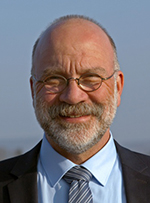 Facilitator: Christoph HilgersProf. Dr. Christoph Hilgers is full professor for Structural Geology and currently director of the Institute of Applied Geosciences at KIT. His interests are energy systems, raw-material efficiency, transnational higher education as well as process- and strategy analyses. Chris is a member of several professional and interdisciplinary boards such as the State’s ThinkTank Industrial Resources Strategies, RawMaterialsKnowledge e.V. and DGMK.
Facilitator: Christoph HilgersProf. Dr. Christoph Hilgers is full professor for Structural Geology and currently director of the Institute of Applied Geosciences at KIT. His interests are energy systems, raw-material efficiency, transnational higher education as well as process- and strategy analyses. Chris is a member of several professional and interdisciplinary boards such as the State’s ThinkTank Industrial Resources Strategies, RawMaterialsKnowledge e.V. and DGMK.  Facilitator: Jürgen GrötschDr. Jürgen Grötsch has a background in carbonate sedimentology and paleoceanography. Following a brief university career, he joined Shell 30 years back where he worked in a variety of functions around the globe like Chief Geologist of NAM. Lately his focus area was technology development, ultimately leading into the global subsurface data management project called OSDU. He is currently the President of the German Geological Society (DGGV) and VP of DVGeo.
Facilitator: Jürgen GrötschDr. Jürgen Grötsch has a background in carbonate sedimentology and paleoceanography. Following a brief university career, he joined Shell 30 years back where he worked in a variety of functions around the globe like Chief Geologist of NAM. Lately his focus area was technology development, ultimately leading into the global subsurface data management project called OSDU. He is currently the President of the German Geological Society (DGGV) and VP of DVGeo. 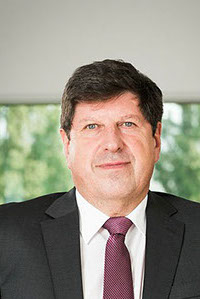 Thomas HirthProfessor Dr. Thomas Hirth is Vice-President for Innovation and International Affairs of KIT since 2016. After his graduation in physical chemistry and electrochemistry, he held different positions at the Fraunhofer-Gesellschaft, such as the Head of the Environmental Engineering Department of the Fraunhofer Institute for Chemical Technology ICT in Pfinztal and later as the director of the Fraunhofer Institute for Interfacial Engineering and Biotechnology IGB, Stuttgart, Head of the Institute of Interfacial Process Engineering and Plasma Technology IGVP and Vice Dean of the Faculty for Energy-, Process- and Bio-Engineering of Stuttgart University.
Thomas HirthProfessor Dr. Thomas Hirth is Vice-President for Innovation and International Affairs of KIT since 2016. After his graduation in physical chemistry and electrochemistry, he held different positions at the Fraunhofer-Gesellschaft, such as the Head of the Environmental Engineering Department of the Fraunhofer Institute for Chemical Technology ICT in Pfinztal and later as the director of the Fraunhofer Institute for Interfacial Engineering and Biotechnology IGB, Stuttgart, Head of the Institute of Interfacial Process Engineering and Plasma Technology IGVP and Vice Dean of the Faculty for Energy-, Process- and Bio-Engineering of Stuttgart University. 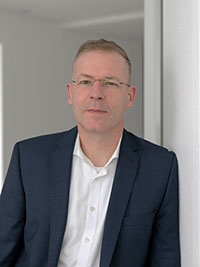 Klaus LangemannNach seinem Studium der Chemie an der Universität Bielefeld und an der University of California at Berkeley, USA promovierte Klaus Langemann 1997 am Max-Planck-Institut für Kohlenforschung in Mülheim a. d. Ruhr. Nach 3 Jahren in der Forschung bei BASF kam er im Jahr 2000 zu Wintershall nach Kassel und arbeitete dort in der Strategie. Zurück bei BASF übernahm er die Tätigkeit als Board Executive Assistant, bevor er bei Wintershall Dea das Business Development und M&A verantwortete. Nach seiner Rückkehr aus den Vereinigten Arabischen Emiraten als General Manager im Jahr 2014, durchlief er mehrere Stationen im Technology-Bereich und leitete zuletzt den Bereich Digitalization & Technology bevor er im Mai 2021 als Senior Vice President den Bereich Carbon Management & Hydrogen übernahm.
Klaus LangemannNach seinem Studium der Chemie an der Universität Bielefeld und an der University of California at Berkeley, USA promovierte Klaus Langemann 1997 am Max-Planck-Institut für Kohlenforschung in Mülheim a. d. Ruhr. Nach 3 Jahren in der Forschung bei BASF kam er im Jahr 2000 zu Wintershall nach Kassel und arbeitete dort in der Strategie. Zurück bei BASF übernahm er die Tätigkeit als Board Executive Assistant, bevor er bei Wintershall Dea das Business Development und M&A verantwortete. Nach seiner Rückkehr aus den Vereinigten Arabischen Emiraten als General Manager im Jahr 2014, durchlief er mehrere Stationen im Technology-Bereich und leitete zuletzt den Bereich Digitalization & Technology bevor er im Mai 2021 als Senior Vice President den Bereich Carbon Management & Hydrogen übernahm. 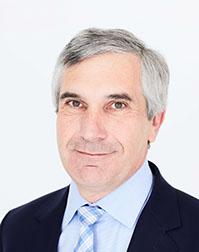 Markus OlesDr. Oles earned his Diploma in Physics (B.S) in the Institute for Laser in 1992 and Plasma physics and his Promotion (Ph.D.) in the Institute of Physiology (Medical faculty) at the Ruhr-University Bochum in Germany in 1997. He completed his studies with a Master of Pharmaceutical Medicine at the University Witten/Herdecke in Germany in 20011998 – 2004: R&D-Manager, Degussa AG, Creavis2004 – 2005: Senior-Manager Controlling, Degussa AG, Creavis2005 – 2008: Principal Inhouse Consulting, Evonik-Services, Essen, Germany2009 – 2010: Head of tkbest, thyssenkrupp Technologies, Germany2010 – 2011: Vice President Division Office Technology. thyssenkrupp AG, Essen, Germany2012 – 2020: Head of Technology Strategy & Projects, thyssenkrupp AG, Essen, GermanySince October 2020: Head of Carbon2Chem, thyssenkrupp Steel Europe AG, Duisburg, GermanyResponsibilities: Carbon2Chem Project overall; CCU and Circular economy; Energy Management; Additive Manufacturing
Markus OlesDr. Oles earned his Diploma in Physics (B.S) in the Institute for Laser in 1992 and Plasma physics and his Promotion (Ph.D.) in the Institute of Physiology (Medical faculty) at the Ruhr-University Bochum in Germany in 1997. He completed his studies with a Master of Pharmaceutical Medicine at the University Witten/Herdecke in Germany in 20011998 – 2004: R&D-Manager, Degussa AG, Creavis2004 – 2005: Senior-Manager Controlling, Degussa AG, Creavis2005 – 2008: Principal Inhouse Consulting, Evonik-Services, Essen, Germany2009 – 2010: Head of tkbest, thyssenkrupp Technologies, Germany2010 – 2011: Vice President Division Office Technology. thyssenkrupp AG, Essen, Germany2012 – 2020: Head of Technology Strategy & Projects, thyssenkrupp AG, Essen, GermanySince October 2020: Head of Carbon2Chem, thyssenkrupp Steel Europe AG, Duisburg, GermanyResponsibilities: Carbon2Chem Project overall; CCU and Circular economy; Energy Management; Additive Manufacturing 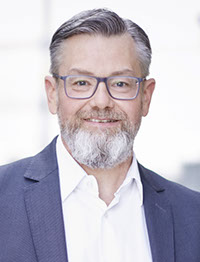 Hans-Joachim PolkHans-Joachim Polk, Member of the Executive Board of VNG AG, who has a master’s degree in Petroleum Engineering, joined VNG AG as a Member of the Executive Board in December 2013 and is responsible for infrastructure and technology. His international expertise ranges from storage of natural gas to exploration and production of oil and gas.As Member of the Supervisory Board he monitors and advises several VNG subsidiaries, e.g. ONTRAS Gastransport GmbH and Erdgasspeicher Peissen GmbH.Besides daily management he is involved in the presidency of ASUE Arbeitsgemeinschaft für sparsamen und umweltfreundlichen Energieverbrauch e.V. and at Deutsch-Russischen Institut für Energiepolitik und Energiewirtschaft e.V.
Hans-Joachim PolkHans-Joachim Polk, Member of the Executive Board of VNG AG, who has a master’s degree in Petroleum Engineering, joined VNG AG as a Member of the Executive Board in December 2013 and is responsible for infrastructure and technology. His international expertise ranges from storage of natural gas to exploration and production of oil and gas.As Member of the Supervisory Board he monitors and advises several VNG subsidiaries, e.g. ONTRAS Gastransport GmbH and Erdgasspeicher Peissen GmbH.Besides daily management he is involved in the presidency of ASUE Arbeitsgemeinschaft für sparsamen und umweltfreundlichen Energieverbrauch e.V. and at Deutsch-Russischen Institut für Energiepolitik und Energiewirtschaft e.V. 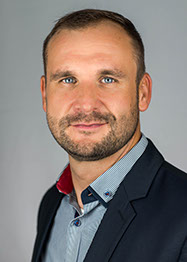 Michael SchmidtMichael Schmidt is a senior geologist and global market analyst at the German Mineral Resources Agency (DERA) based in Berlin, which is part of the Federal Institute for Geosciences and Natural Resources (BGR). Since October 2012, he works in risk analysis for different commodities including Antimony, PGMs, Lithium and Boron. As DERA specialist for global trade, he is a consultant to the German industry in commodity related issues.
Michael SchmidtMichael Schmidt is a senior geologist and global market analyst at the German Mineral Resources Agency (DERA) based in Berlin, which is part of the Federal Institute for Geosciences and Natural Resources (BGR). Since October 2012, he works in risk analysis for different commodities including Antimony, PGMs, Lithium and Boron. As DERA specialist for global trade, he is a consultant to the German industry in commodity related issues.
Tuesday, 21 September 2021 | 10:45-12:00 h (CET)
Kritische Rohstoffe* (click for details)* The event will be interpreted into English.Deutschland ist eine Industrienation mit hohem Rohstoffbedarf. Im Gegensatz zum Industriemineral- und Steine & Erden-Sektor, in denen Deutschland in vielen Bereichen Selbstversorger ist, ist die deutsche Industrie bei Metallrohstoffen auf Import und Recycling angewiesen. Gleichzeitig sorgen Energie- und Mobilitätswende für einen Wandel im benötigten Rohstoffmix und einen häufig vielfach erhöhten Rohstoffbedarf. Recycling und Kreislaufwirtschaft allein können in den nächsten Jahrzehnten diesen Bedarf nicht decken. Einige dieser Rohstoffe sind essentiell für die deutsche Wirtschaft und haben ein erhöhtes Risiko, am Markt nicht ausreichend verfügbar zu sein. Sie werden daher als Kritische Rohstoffe bezeichnet.Wie können der Bedarf an Kritischen Rohstoffen gedeckt und die Lieferketten für die deutsche Industrie gesichert werden? Was kann Recycling beitragen und wie muss die Recyclingindustrie weiterentwickelt werden? Wie stellt sich die produzierende Industrie auf? Welche Weichen müssen politisch gestellt werden? Welches Potenzial bietet der heimische Bergbau auf Kritische Rohstoffe?Germany is an industrialized economy with a high demand for raw materials. In contrast to the industrial rocks & minerals, in which Germany is self-sufficient in many fields, the German industry is dependent on import and recycling of metals. At the same time, the energy- and mobility transition are causing a change in the required raw materials and an often a significant increase in demand of raw materials. Recycling and the circular economy alone will not be able to meet this demand in the coming decades. Some of these raw materials are essential for the German economy and have an increased risk of not being sufficiently available on the market. They are therefore referred to as critical raw materials. How can the demand for critical raw materials be met and the supply chains for German industry secured? What can recycling contribute and how does the recycling industry have to be further developed? How is the manufacturing industry lining-up? Which course must be set politically? What potential does domestic mining offer for critical raw materials?Moderators: Jochen Kolb, KIT & Christoph Hilgers, KITPanel Members:• Prof. Dr. Thomas Hirth, Vice-President for Innovation and International Affairs, KIT• Dr. Peter Buchholz, Head of Deutsche Rohstoffagentur (DERA) in der Bundesanstalt für Geowissenschaften und Rohstoffe (BGR)• Moritz Ostenrieder, Managing Director at Sachtleben Minerals GmbH & Co. KG• Dr. Andreas Wendt, Vorstand der BMW AG für Einkauf und Lieferantennetzwerk• André Mandel, Head of Corporate Communication Scholz Recycling GmbH 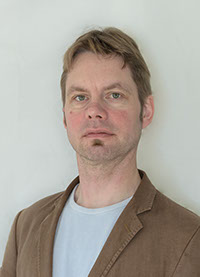 Facilitator: Jochen KolbProf. Dr. Jochen Kolb is full professor for Geochemistry and Economic Geology at the Institute of Applied Geosciences at KIT. His interests are, besides geochemical analytics, geological processes forming ore deposits, geothermal energy, mineral economics and mineral exploration. Jochen is a member of several professional and interdisciplinary boards such as the THINKTANK Industrial Resource Strategies, the Society for Geology Applied to Mineral Deposits (SGA) and the cluster “Geochemical Characterization and Technologies“ Helmholtz Program Geothermal Energy.
Facilitator: Jochen KolbProf. Dr. Jochen Kolb is full professor for Geochemistry and Economic Geology at the Institute of Applied Geosciences at KIT. His interests are, besides geochemical analytics, geological processes forming ore deposits, geothermal energy, mineral economics and mineral exploration. Jochen is a member of several professional and interdisciplinary boards such as the THINKTANK Industrial Resource Strategies, the Society for Geology Applied to Mineral Deposits (SGA) and the cluster “Geochemical Characterization and Technologies“ Helmholtz Program Geothermal Energy.  Facilitator: Christoph HilgersProf. Dr. Christoph Hilgers is full professor for Structural Geology and currently director of the Institute of Applied Geosciences at KIT. His interests are energy systems, raw-material efficiency, transnational higher education as well as process- and strategy analyses. Chris is a member of several professional and interdisciplinary boards such as the State’s ThinkTank Industrial Resources Strategies, RawMaterialsKnowledge e.V. and DGMK.
Facilitator: Christoph HilgersProf. Dr. Christoph Hilgers is full professor for Structural Geology and currently director of the Institute of Applied Geosciences at KIT. His interests are energy systems, raw-material efficiency, transnational higher education as well as process- and strategy analyses. Chris is a member of several professional and interdisciplinary boards such as the State’s ThinkTank Industrial Resources Strategies, RawMaterialsKnowledge e.V. and DGMK. 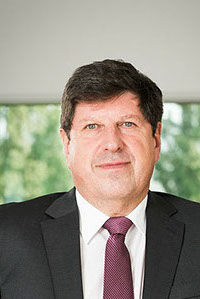 Thomas HirthProfessor Dr. Thomas Hirth is Vice-President for Innovation and International Affairs of KIT since 2016. After his graduation in physical chemistry and electrochemistry, he held different positions at the Fraunhofer-Gesellschaft, such as the Head of the Environmental Engineering Department of the Fraunhofer Institute for Chemical Technology ICT in Pfinztal and later as the director of the Fraunhofer Institute for Interfacial Engineering and Biotechnology IGB, Stuttgart, Head of the Institute of Interfacial Process Engineering and Plasma Technology IGVP and Vice Dean of the Faculty for Energy-, Process- and Bio-Engineering of Stuttgart University.
Thomas HirthProfessor Dr. Thomas Hirth is Vice-President for Innovation and International Affairs of KIT since 2016. After his graduation in physical chemistry and electrochemistry, he held different positions at the Fraunhofer-Gesellschaft, such as the Head of the Environmental Engineering Department of the Fraunhofer Institute for Chemical Technology ICT in Pfinztal and later as the director of the Fraunhofer Institute for Interfacial Engineering and Biotechnology IGB, Stuttgart, Head of the Institute of Interfacial Process Engineering and Plasma Technology IGVP and Vice Dean of the Faculty for Energy-, Process- and Bio-Engineering of Stuttgart University. 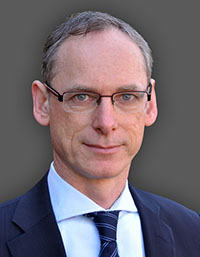 Peter BuchholzDr. Peter Buchholz ist seit 2005 bei der Bundesanstalt für Geowissenschaften und Rohstoffe (BGR) beschäftigt und leitet seit 2012 die Deutsche Rohstoffagentur (DERA) in der BGR. Als Mitarbeiter einer Ressortforschungseinrichtung berät er kontinuierlich Politik, Wirtschaft und Gesellschaft zu aktuellen Rohstofffragen. Im Auftrag der Bundesregierung betreibt die DERA ein Rohstoffmonitoring und stellt in diesem Rahmen Rohstoffinformationen und Analysen zur Einschätzung potenzieller Preis- und Lieferrisiken auf den Rohstoffmärkten bereit. Im Rahmen der Länderpartnerschaften der Bundesregierung und weiterer Länderkooperationen erarbeitet die DERA darüber hinaus in Partnerschaft mit lokalen geologischen Diensten Rohstoffpotenzialstudien und erarbeitet Beiträge zur Rohstoffsicherung für Unternehmen. Diese Tätigkeiten führen ihn häufig in bedeutende Bergbauregionen ins Ausland.Vor seiner Zeit in der BGR war er beruflich als Rohstoffgeologe in den Bereichen Lagerstättenforschung, Exploration und Rohstoffhandel tätig. Seine Dissertation fertigte er über Goldlagerstätten an der RWTH Aachen im Jahr 1995 an. Anschließend arbeitete er als wissenschaftlicher Assistent an der TU Bergakademie Freiberg, leitete als M. Sc. Direktor von 1998 bis 2002 den Masterstudiengang Explorationsgeologie an der University of Zimbabwe, und war danach geschäftsführender Direktor einer Rohstoffhandelsfirma. Seine Arbeiten wurden national und international ausgezeichnet.
Peter BuchholzDr. Peter Buchholz ist seit 2005 bei der Bundesanstalt für Geowissenschaften und Rohstoffe (BGR) beschäftigt und leitet seit 2012 die Deutsche Rohstoffagentur (DERA) in der BGR. Als Mitarbeiter einer Ressortforschungseinrichtung berät er kontinuierlich Politik, Wirtschaft und Gesellschaft zu aktuellen Rohstofffragen. Im Auftrag der Bundesregierung betreibt die DERA ein Rohstoffmonitoring und stellt in diesem Rahmen Rohstoffinformationen und Analysen zur Einschätzung potenzieller Preis- und Lieferrisiken auf den Rohstoffmärkten bereit. Im Rahmen der Länderpartnerschaften der Bundesregierung und weiterer Länderkooperationen erarbeitet die DERA darüber hinaus in Partnerschaft mit lokalen geologischen Diensten Rohstoffpotenzialstudien und erarbeitet Beiträge zur Rohstoffsicherung für Unternehmen. Diese Tätigkeiten führen ihn häufig in bedeutende Bergbauregionen ins Ausland.Vor seiner Zeit in der BGR war er beruflich als Rohstoffgeologe in den Bereichen Lagerstättenforschung, Exploration und Rohstoffhandel tätig. Seine Dissertation fertigte er über Goldlagerstätten an der RWTH Aachen im Jahr 1995 an. Anschließend arbeitete er als wissenschaftlicher Assistent an der TU Bergakademie Freiberg, leitete als M. Sc. Direktor von 1998 bis 2002 den Masterstudiengang Explorationsgeologie an der University of Zimbabwe, und war danach geschäftsführender Direktor einer Rohstoffhandelsfirma. Seine Arbeiten wurden national und international ausgezeichnet. 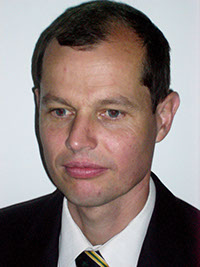 Moritz OstenriederStudium: Dipl.-Ing. Bergbau an der TU BerlinBeruf: Projektingenieur bei Sachtleben Bergbau in der Planungsabteilung für internationale Projekte Steiger Schwerspatgrube Dreislar / Sachtleben Bergbau Entsendung zu Metallerzgruben nach Tunesien und in die Türkei durch Sachtleben Bergbau Selbständiger beratender Bergbauingenieur Geschäftsführender Gesellschafter bei der Sachtleben Minerals GmbH & Co. KG
Moritz OstenriederStudium: Dipl.-Ing. Bergbau an der TU BerlinBeruf: Projektingenieur bei Sachtleben Bergbau in der Planungsabteilung für internationale Projekte Steiger Schwerspatgrube Dreislar / Sachtleben Bergbau Entsendung zu Metallerzgruben nach Tunesien und in die Türkei durch Sachtleben Bergbau Selbständiger beratender Bergbauingenieur Geschäftsführender Gesellschafter bei der Sachtleben Minerals GmbH & Co. KG 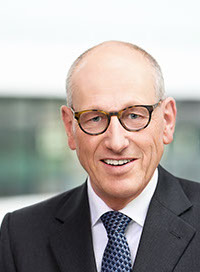 Andreas WendtSDr.-Ing. Andreas Wendt ist seit 2018 als Mitglied des Vorstands der BMW AG verantwortlich für den Einkauf und das Lieferantennetzwerk. Der Maschinenbauingenieur Wendt hatte bei der BMW AG zuvor verschiedene Positionen inne und leitete unter anderem das größte deutsche Werk der BMW Group in Dingolfing. Davor leitete Wendt acht Jahre lang das Werk Regensburg.Wendt begann seine Karriere bei der BMW Group im Jahr 2002 als Leiter der Strategieentwicklung für die Produktion. Anschließend leitete er die Produktion von Fahrwerks- und Antriebsstrangkomponenten für die Werke Landshut, Dingolfing und Berlin. Von Mai 2006 bis zu seinem Wechsel nach Regensburg war Wendt Leiter des größten Motorenwerks der BMW Group in Steyr, Österreich.
Andreas WendtSDr.-Ing. Andreas Wendt ist seit 2018 als Mitglied des Vorstands der BMW AG verantwortlich für den Einkauf und das Lieferantennetzwerk. Der Maschinenbauingenieur Wendt hatte bei der BMW AG zuvor verschiedene Positionen inne und leitete unter anderem das größte deutsche Werk der BMW Group in Dingolfing. Davor leitete Wendt acht Jahre lang das Werk Regensburg.Wendt begann seine Karriere bei der BMW Group im Jahr 2002 als Leiter der Strategieentwicklung für die Produktion. Anschließend leitete er die Produktion von Fahrwerks- und Antriebsstrangkomponenten für die Werke Landshut, Dingolfing und Berlin. Von Mai 2006 bis zu seinem Wechsel nach Regensburg war Wendt Leiter des größten Motorenwerks der BMW Group in Steyr, Österreich.
Wednesday, 22 September 2021 | 10:30-12:00 h (CET)
The Future of Geodata Management (click for details)Geodata management will be a critical success factor for major present-day societal challenges like the Energy Transition. The demand for decentralized energy generation based on renewable geothermal sources, subsurface hydrogen storage and carbon sequestration need a fundamental change in how we make large amounts of geoscience data available in digital formats. The same applies to ongoing projects in many European countries around safely storing nuclear waste which can only be achieved if screening of many subsurface locations is supported by large-scale efforts around data management. Similar needs also arise around water resource issues and the identification of alternative solutions. Theses societal challenges in context of the ongoing revolutionary changes triggered by digitalization are the theme of this panel discussion.Moderator: Jürgen Grötsch, President DGGV & Christoph Hilgers, KITPanel Members:• Karen Hanghøj, Director British Geological Survey (BGS)• Ralph Watzel, Director Germany Geological Survey (BGR)• Maximilian Ahrens, CTO T-Systems• Johan Krebbers, Shell & OSDU  Facilitator: Dr. Jürgen GrötschJürgen has a background in carbonate sedimentology and paleoceanography. Following a brief university career, he joined Shell 30 years back were he worked in a variety of functions around the globe like Chief Geologist of NAM. Lately his focus area was technology development, ultimately leading into the global subsurface data management project called OSDU. He is currently the President of the German Geological Society (DGGV) and VP of DVGeo.
Facilitator: Dr. Jürgen GrötschJürgen has a background in carbonate sedimentology and paleoceanography. Following a brief university career, he joined Shell 30 years back were he worked in a variety of functions around the globe like Chief Geologist of NAM. Lately his focus area was technology development, ultimately leading into the global subsurface data management project called OSDU. He is currently the President of the German Geological Society (DGGV) and VP of DVGeo.  Facilitator: Prof. Dr. Chris HilgersProf. Dr. Christoph Hilgers is full professor for Structural Geology and currently director of the Institute of Applied Geosciences at KIT. His interests are energy systems, raw-material efficiency, transnational higher education as well as process- and strategy analyses. Chris is a member of several professional and interdisciplinary boards such as the State’s ThinkTank Industrial Resources Strategies, RawMaterialsKnowledge e.V. and DGMK.
Facilitator: Prof. Dr. Chris HilgersProf. Dr. Christoph Hilgers is full professor for Structural Geology and currently director of the Institute of Applied Geosciences at KIT. His interests are energy systems, raw-material efficiency, transnational higher education as well as process- and strategy analyses. Chris is a member of several professional and interdisciplinary boards such as the State’s ThinkTank Industrial Resources Strategies, RawMaterialsKnowledge e.V. and DGMK.  Dr. Karen HanghøjDr. Karen Hanghøj has been the Director of the British Geological Survey since October 2019. Karen has extensive experience in business and research, including mineral exploration and leadership roles at the Geological Survey of Denmark & Greenland and EIT RawMaterials. She is a member of a range of advisory boards and has international experience in science and innovation in geoscience including the future of resources, sustainability and circular economy.
Dr. Karen HanghøjDr. Karen Hanghøj has been the Director of the British Geological Survey since October 2019. Karen has extensive experience in business and research, including mineral exploration and leadership roles at the Geological Survey of Denmark & Greenland and EIT RawMaterials. She is a member of a range of advisory boards and has international experience in science and innovation in geoscience including the future of resources, sustainability and circular economy. 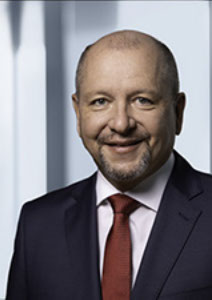 Prof. Dr. Ralph WatzelRalph Watzel is a German hydro-geologist and the President of the Federal Institute for Geosciences and Natural Resources (BGR) since 2016. He was elected to the two-year term 2021-22 as President of EuroGeoSurveys. He served for 25 years on various levels of the public administration of the state of Baden-Württemberg, ranging from practical experience as hydro-geologist to the head of the geological survey and mining authority. Ralph Watzel is a graduate of the Technical University Karlsruhe and postgraduate of Freiburg University, where he is engaged in academic teaching since2000. In 2007 he completed a management education at St. Gallen university, Switzerland.
Prof. Dr. Ralph WatzelRalph Watzel is a German hydro-geologist and the President of the Federal Institute for Geosciences and Natural Resources (BGR) since 2016. He was elected to the two-year term 2021-22 as President of EuroGeoSurveys. He served for 25 years on various levels of the public administration of the state of Baden-Württemberg, ranging from practical experience as hydro-geologist to the head of the geological survey and mining authority. Ralph Watzel is a graduate of the Technical University Karlsruhe and postgraduate of Freiburg University, where he is engaged in academic teaching since2000. In 2007 he completed a management education at St. Gallen university, Switzerland. 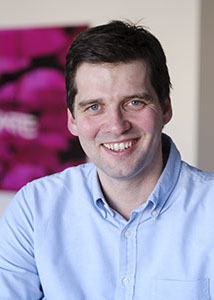 Maximilian AhrensMaximilian Ahrens is CTO of T-Systems. As the CTO he is responsible for the technology strategy of T-Systems, driving overarching technology topics across the different units within T-Systems. Also he is leading the CTO Board – a board consisting of the top 10 technologists. In addition he runs as VP Strategy Cloud the public cloud strategy for T-Systems. Maximilian has an entrepreneurial background. Before joining T-Systems he founded and sold the majority stake of a infrastructure cloud technology company that enabled clients to build and manage distributed cloud deployments. As the CTO and CPO he led the product strategy and engineering teams. Maximilian graduated from Technical University Berlin as an Industrial Engineer and holds a PhD from University of St. Gallen.
Maximilian AhrensMaximilian Ahrens is CTO of T-Systems. As the CTO he is responsible for the technology strategy of T-Systems, driving overarching technology topics across the different units within T-Systems. Also he is leading the CTO Board – a board consisting of the top 10 technologists. In addition he runs as VP Strategy Cloud the public cloud strategy for T-Systems. Maximilian has an entrepreneurial background. Before joining T-Systems he founded and sold the majority stake of a infrastructure cloud technology company that enabled clients to build and manage distributed cloud deployments. As the CTO and CPO he led the product strategy and engineering teams. Maximilian graduated from Technical University Berlin as an Industrial Engineer and holds a PhD from University of St. Gallen. 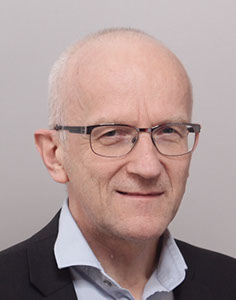 Johan KrebbersJohan Krebbers is VP IT Innovation and GM Emerging Digital Technologies for Shell and in these roles he is accountable for defining the future elements of the IT strategy for Shell & spotting new Digital technologies. As part of these roles he maintains an active link with external parties and in particular start ups. As part of his Shell role in the Open Group he has initiated the Open Footprint Forum and is the lead of the OMC of the OSDU Forum now with over 190 members.Johan is based in Amsterdam, The Netherlands. Before this role he, for example, has been the VP Architecture for Shell, where he created and developed the global architecture practice across Shell.Before these roles Johan has executed many different IT roles in Shell across multiple locations.
Johan KrebbersJohan Krebbers is VP IT Innovation and GM Emerging Digital Technologies for Shell and in these roles he is accountable for defining the future elements of the IT strategy for Shell & spotting new Digital technologies. As part of these roles he maintains an active link with external parties and in particular start ups. As part of his Shell role in the Open Group he has initiated the Open Footprint Forum and is the lead of the OMC of the OSDU Forum now with over 190 members.Johan is based in Amsterdam, The Netherlands. Before this role he, for example, has been the VP Architecture for Shell, where he created and developed the global architecture practice across Shell.Before these roles Johan has executed many different IT roles in Shell across multiple locations.
Thursday, 23 September 2021 | 10:45-12:00 h (CET)
Grundwasser und Trinkwasser – Herausforderungen durch Klimawandel und Landnutzung* (click for details)* The event will be interpreted into English.Grundwasser gehört global zu den wichtigsten Wasserressourcen und trägt in Deutschland etwa 75% zur Trinkwasserversorgung bei, in Karlsruhe sogar 100%. In vielen Regionen weltweit wird Grundwasser auch in zunehmendem Umfang für die landwirtschaftliche Bewässerung genutzt, spielt also auch bei der Nahrungsmittelproduktion für die wachsende Weltbevölkerung eine wichtige Rolle. Grundwasser ist Teil des Wasserkreislaufs, speist Quellen, Bäche, Flüsse und Seen und ist entscheidend wichtig für viele Ökosysteme, woraus sich vielfältige Konflikte mit der menschlichen Nutzung ergeben. Der prognostizierte Klimawandel mit all seinen Unsicherheiten und die sich verändernde Landnutzung stellen für die Verfügbarkeit und Qualität der Grundwasserressourcen vielfältige Herausforderungen dar, wie beispielsweise die großflächige Kontamination mit Nitrat aus der Landwirtschaft, dramatische Abnahmen der Grundwasserstände in manchen Weltregionen aufgrund von Wasserentnahmen für die Bewässerung, sowie veränderte und teils schwer prognostizierbare Änderungen der Grundwasserneubildung durch den Klimawandel. Diese und andere Herausforderungen werden in einer Runde von Hydrogeologen und anderen Fachleuten aus der universitären Forschung, der beruflichen Praxis und von zuständigen Behörden diskutiert. Organizer: Fachsektion Hydrogeologie der DGGV• Prof. Dr. Traugott Scheytt, TU Freiberg, Vorsitzender FH-DGGV• Prof. Dr. Nico Goldscheider, KIT Moderator: Lioba Virchow, GFZ Potsdam Panel Members:• Prof. Nico Goldscheider, KIT• Prof. Matthias Maier, Stadtwerke Karlsruhe• Prof. Maria-Theresia Schafmeister, Uni Greifswald• Dr. Klaus Schnell, ERM• Thomas Walter, Umweltministerium Saarland 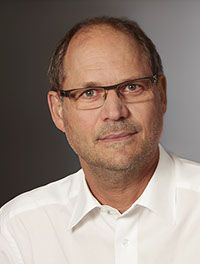 Organizer: Traugott ScheyttProf. Dr. Traugott Scheytt hat den Lehrstuhl für Hydrogeologie und Hydrochemie an der TU Bergakademie Freiberg. Traugott Scheytt hält Vorlesungen zur Grundwasserströmung, zur Hydrochemie und zum Stofftransport, betreut Masterarbeiten und Dissertationen und ist durch Publikationen und Vorträge wissenschaftlich ausgewiesen. Zu seinen derzeitigem Forschungsschwerpunkten zählen Oberflächenwasser-Grundwasserwechselwirkungen, der Transport von Mikroplastik sowie Viren und Bakterien in Kluft- und Karstgrundwasserleitern. Er ist Sprecher des Zentrums für Wasserforschung an der TU Bergakademie Freiberg und Vorsitzender der Fachsektion Hydrogeologie (FH-DGGV).[https://tu-freiberg.de/geo/hydro]
Organizer: Traugott ScheyttProf. Dr. Traugott Scheytt hat den Lehrstuhl für Hydrogeologie und Hydrochemie an der TU Bergakademie Freiberg. Traugott Scheytt hält Vorlesungen zur Grundwasserströmung, zur Hydrochemie und zum Stofftransport, betreut Masterarbeiten und Dissertationen und ist durch Publikationen und Vorträge wissenschaftlich ausgewiesen. Zu seinen derzeitigem Forschungsschwerpunkten zählen Oberflächenwasser-Grundwasserwechselwirkungen, der Transport von Mikroplastik sowie Viren und Bakterien in Kluft- und Karstgrundwasserleitern. Er ist Sprecher des Zentrums für Wasserforschung an der TU Bergakademie Freiberg und Vorsitzender der Fachsektion Hydrogeologie (FH-DGGV).[https://tu-freiberg.de/geo/hydro] 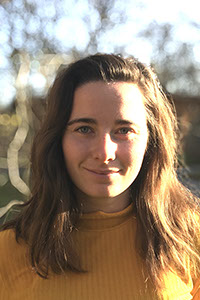 Moderator: Lioba VirchowFrau M.Sc. Lioba Virchow hat an der Technischen Universität Berlin Geotechnologie im Bachelorstudium und Masterstudium absolviert. Während ihres Studiums war sie langjährige studentische Hilfskraft im Fachgebiet Hydrogeologie und hat ihre Masterarbeit zu Fluorid im Ostafrikanischen Graben erstellt. Seit Oktober 2019 ist sie Doktorandin am GFZ Potsdam in der Sektion 4.8 Geoenergie und an der FU Berlin. Sie ist Mitglied des Vorstands der Fachsektion Hydrogeologie in der DGGV.
Moderator: Lioba VirchowFrau M.Sc. Lioba Virchow hat an der Technischen Universität Berlin Geotechnologie im Bachelorstudium und Masterstudium absolviert. Während ihres Studiums war sie langjährige studentische Hilfskraft im Fachgebiet Hydrogeologie und hat ihre Masterarbeit zu Fluorid im Ostafrikanischen Graben erstellt. Seit Oktober 2019 ist sie Doktorandin am GFZ Potsdam in der Sektion 4.8 Geoenergie und an der FU Berlin. Sie ist Mitglied des Vorstands der Fachsektion Hydrogeologie in der DGGV. 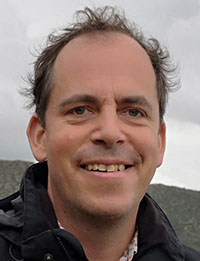 Nico GoldscheiderProf. Dr. Nico Goldscheider ist Professor für Hydrogeologie am Karlsruher Institut für Technologie (KIT). Er studierte Geologie und Geoökologie in Karlsruhe und promovierte 2002 in der Hydrogeologie. Anschließend war er Oberassistent am Zentrum für Hydrogeologie an der Universität Neuchâtel, Schweiz (2002-2010) und Professor für Hydrogeologie und Geothermie an der TU München (2010-2011), bis er 2011 ans KIT berufen wurde. Seine Forschung umfasst Karst- und alpine Hydrogeologie, Grundwasserqualität und Grundwasserschutz. Er war von 2009 bis 2017 Vorsitzender der IAH Karstkommission und hat diverse internationale Projekte über Grundwasser in Karstregionen geleitet. Er ist aktuell Editor der Zeitschrift „Grundwasser“, hat ein internationales Lehrbuch zur Karsthydrogeologie, mehrere Buchkapitel und über 100 wissenschaftliche Arbeiten veröffentlicht.[https://hydro.agw.kit.edu/]
Nico GoldscheiderProf. Dr. Nico Goldscheider ist Professor für Hydrogeologie am Karlsruher Institut für Technologie (KIT). Er studierte Geologie und Geoökologie in Karlsruhe und promovierte 2002 in der Hydrogeologie. Anschließend war er Oberassistent am Zentrum für Hydrogeologie an der Universität Neuchâtel, Schweiz (2002-2010) und Professor für Hydrogeologie und Geothermie an der TU München (2010-2011), bis er 2011 ans KIT berufen wurde. Seine Forschung umfasst Karst- und alpine Hydrogeologie, Grundwasserqualität und Grundwasserschutz. Er war von 2009 bis 2017 Vorsitzender der IAH Karstkommission und hat diverse internationale Projekte über Grundwasser in Karstregionen geleitet. Er ist aktuell Editor der Zeitschrift „Grundwasser“, hat ein internationales Lehrbuch zur Karsthydrogeologie, mehrere Buchkapitel und über 100 wissenschaftliche Arbeiten veröffentlicht.[https://hydro.agw.kit.edu/] 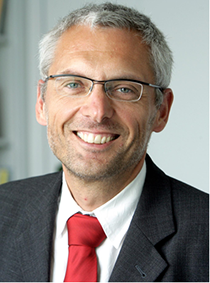 Matthias MaierProf. Dr. Matthias Maier ist derzeit Geschäftsbereichsleiter Trinkwasser bei den Stadtwerken Karlsruhe. Dort befasst er sich mit Themen der Wasserversorgung, Wassergüte und Geohydrologie. Nach dem Studium der Siedlungswasserwirtschaft in Karlsruhe wurde Matthias Maier am Centre for Environmental and Health Engineering der Universität Surrey, GB, promoviert und für die Arbeiten mit dem Maarten – Schalekamp – Award der IWA ausgezeichnet. Nach über 10 Jahren Gastprofessur an den Universitäten Surrey, UK, Ruhuna, CL ist Matthias Maier seit 2011 Honorarprofessor an der Hochschule Karlsruhe. Darüber hinaus ist er neben diversen ehrenamtlichen Tätigkeiten in DVGW und BDEW Präsident der Arbeitsgemeinschaft der Wasserwerke im Rheineinzugsgebiet mit 120 Mitgliedsunternehmen, die 61 Millionen Trinkwasserkunden versorgen und sich für Trink- und Gewässerschutz einsetzt.
Matthias MaierProf. Dr. Matthias Maier ist derzeit Geschäftsbereichsleiter Trinkwasser bei den Stadtwerken Karlsruhe. Dort befasst er sich mit Themen der Wasserversorgung, Wassergüte und Geohydrologie. Nach dem Studium der Siedlungswasserwirtschaft in Karlsruhe wurde Matthias Maier am Centre for Environmental and Health Engineering der Universität Surrey, GB, promoviert und für die Arbeiten mit dem Maarten – Schalekamp – Award der IWA ausgezeichnet. Nach über 10 Jahren Gastprofessur an den Universitäten Surrey, UK, Ruhuna, CL ist Matthias Maier seit 2011 Honorarprofessor an der Hochschule Karlsruhe. Darüber hinaus ist er neben diversen ehrenamtlichen Tätigkeiten in DVGW und BDEW Präsident der Arbeitsgemeinschaft der Wasserwerke im Rheineinzugsgebiet mit 120 Mitgliedsunternehmen, die 61 Millionen Trinkwasserkunden versorgen und sich für Trink- und Gewässerschutz einsetzt. 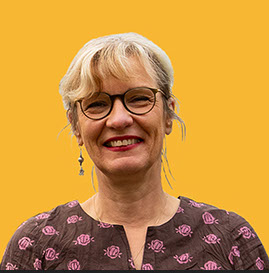 Maria-Theresia SchafmeisterMaria-Theresia Schafmeister ist Professorin für Angewandte Geologie / Hydrogeologie an der Universität Greifwald. Prof. Schafmeister ist langjähriges Mitglied des akademischen Senats der Universität Greifswald und ist seit 2005 Editorin der internationalen Fachzeitschrift Hydrogeology Journal. Der Schwerpunkt der Arbeiten von Prof. Schafmeister liegt in der Hydrogeologie und den mathematischen Methoden zur Analyse geologischer Systeme. 2010 erhielt sie den Karl-Heinrich-Heitfeld Preis der GeoUnion und ist seit diesem Jahr gewähltes Mitglied des Nationalen Begleitgremiums zur Endlagersuche.
Maria-Theresia SchafmeisterMaria-Theresia Schafmeister ist Professorin für Angewandte Geologie / Hydrogeologie an der Universität Greifwald. Prof. Schafmeister ist langjähriges Mitglied des akademischen Senats der Universität Greifswald und ist seit 2005 Editorin der internationalen Fachzeitschrift Hydrogeology Journal. Der Schwerpunkt der Arbeiten von Prof. Schafmeister liegt in der Hydrogeologie und den mathematischen Methoden zur Analyse geologischer Systeme. 2010 erhielt sie den Karl-Heinrich-Heitfeld Preis der GeoUnion und ist seit diesem Jahr gewähltes Mitglied des Nationalen Begleitgremiums zur Endlagersuche. 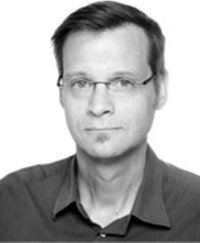 Klaus SchnellDr. Klaus Schnell is a Partner with Environmental Resources Management (ERM). Klaus is a Hydrogeologist by education and is working in the environmental consulting business since more than twenty years. He accumulated extensive experience as senior advisor in the fields of groundwater related services including hydrogeological due diligence, source water protection and vulnerability, water exploration, groundwater management and remediation. Klaus has been supporting a broad variety of industry clients to help them managing their environmental and sustainability challenges in multiple geographies and jurisdictions around the globe.ERM is a leading global provider of environmental, health, safety, risk, social consulting services and sustainability related services. We work with the world's leading organizations, delivering innovative solutions and helping them to understand and manage their sustainability challenges. To do this, we have more than 5,500 people in over 40 countries and territories working out of more than 160 offices.
Klaus SchnellDr. Klaus Schnell is a Partner with Environmental Resources Management (ERM). Klaus is a Hydrogeologist by education and is working in the environmental consulting business since more than twenty years. He accumulated extensive experience as senior advisor in the fields of groundwater related services including hydrogeological due diligence, source water protection and vulnerability, water exploration, groundwater management and remediation. Klaus has been supporting a broad variety of industry clients to help them managing their environmental and sustainability challenges in multiple geographies and jurisdictions around the globe.ERM is a leading global provider of environmental, health, safety, risk, social consulting services and sustainability related services. We work with the world's leading organizations, delivering innovative solutions and helping them to understand and manage their sustainability challenges. To do this, we have more than 5,500 people in over 40 countries and territories working out of more than 160 offices. 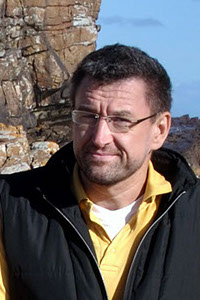 Thomas WalterThomas Walter ist Diplomgeologe (FAU Erlangen 1987) und dem damals häufigen Patchwork-Lebenslauf eines Geologen in den 80er und 90er Jahren seit 1996 im Öffentlichen Dienst des Saarlandes tätig, zunächst als Hydrogeologe im Geologischen Dienst.Mit der Reorganisation des Landesamtes im Jahre 2004 übernahm er auch die Aufgabe des stellvertretenden Leiters der saarländischen Unteren Wasserbehörde und die Verantwortung für das Grundwassermessnetz, war aber gleichzeitig weiterhin als Landesgeologe tätig. In dieser Funktion war er seit 1998 Mitglied der AG Hydrogeologie, davon von 2010 bis 2016 als deren Obmann und im selben Zeitraum auch Vertreter des Saarlandes im Direktorenkreis der Staatlichen Geologischen Dienste.Seit 2015 ist er Referent in der Obersten Wasserbehörde des Saarlandes. Hauptaufgaben in den letzten Jahren waren neben den üblichen wasserwirtschaftlichen Fragestellungen vor Allem die Frage des Umgangs mit dem Nachbergbau im Saarland, der Aufbau und die Verbesserung des ersten landesweiten Grundwassermodells als Werkzeug für die Bearbeitung wasserwirtschaftlicher Fragestellungen und die Umsetzung von Wasser-Rahmen- und Nitratrichtlinie. Seit 2019 vertritt er das Saarland In der Arbeitsgruppe Grundwasser des KLIWA-Projekts (Klimaveränderung und Wasserwirtschaft www.kliwa.de).
Thomas WalterThomas Walter ist Diplomgeologe (FAU Erlangen 1987) und dem damals häufigen Patchwork-Lebenslauf eines Geologen in den 80er und 90er Jahren seit 1996 im Öffentlichen Dienst des Saarlandes tätig, zunächst als Hydrogeologe im Geologischen Dienst.Mit der Reorganisation des Landesamtes im Jahre 2004 übernahm er auch die Aufgabe des stellvertretenden Leiters der saarländischen Unteren Wasserbehörde und die Verantwortung für das Grundwassermessnetz, war aber gleichzeitig weiterhin als Landesgeologe tätig. In dieser Funktion war er seit 1998 Mitglied der AG Hydrogeologie, davon von 2010 bis 2016 als deren Obmann und im selben Zeitraum auch Vertreter des Saarlandes im Direktorenkreis der Staatlichen Geologischen Dienste.Seit 2015 ist er Referent in der Obersten Wasserbehörde des Saarlandes. Hauptaufgaben in den letzten Jahren waren neben den üblichen wasserwirtschaftlichen Fragestellungen vor Allem die Frage des Umgangs mit dem Nachbergbau im Saarland, der Aufbau und die Verbesserung des ersten landesweiten Grundwassermodells als Werkzeug für die Bearbeitung wasserwirtschaftlicher Fragestellungen und die Umsetzung von Wasser-Rahmen- und Nitratrichtlinie. Seit 2019 vertritt er das Saarland In der Arbeitsgruppe Grundwasser des KLIWA-Projekts (Klimaveränderung und Wasserwirtschaft www.kliwa.de).
Plenaries & Evening Lecture
Monday, 20 September 2021 | 15:15-16:00 h
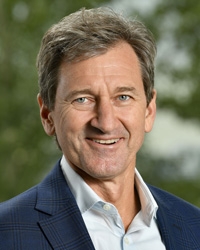 From Poverty to Prosperity: The Real Energy Transition
From Poverty to Prosperity: The Real Energy Transition
Scott W. Tinker
Scott Tinker works to bring industry, government, academia, and nongovernmental organizations together to address major societal challenges in energy, the environment, and the economy. Dr. Tinker is Director of the 250-person Bureau of Economic Geology, the State Geologist of Texas, and a professor holding the Edwin Allday Endowed Chair in the Jackson School of Geosciences at The University of Texas at Austin.
Tuesday, 21 September 2021 | 15:15-16:00 h
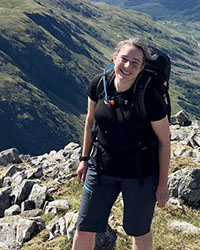 Critical Raw Materials for the Energy Transition
Critical Raw Materials for the Energy Transition
Kathryn Goodenough
Dr. Kathryn Goodenough is a Principal Geologist at the British Geological Survey. Her research focuses on the geology and resources of critical raw materials, with a particular interest in the rare earth elements and lithium. She has been involved in a number of large international research projects on this topic, and is currently Principal Investigator for the LiFT (Lithium for Future Technology) project. She is also the Chief Editor of the Open Access journal Earth Science, Systems and Society (ES3) and would welcome submissions from GeoKarlsruhe participants!
Wednesday, 22 September 2021 | 15:15-16:00 h
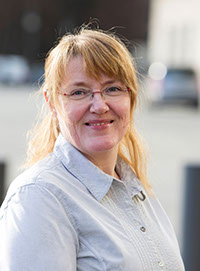 The Future of Geodata Management – the UK experiences
The Future of Geodata Management – the UK experiences
Karen Hanghøj
Dr. Karen Hanghøj has been the Director of the British Geological Survey since October 2019. Karen has extensive experience in business and research, including mineral exploration and leadership roles at the Geological Survey of Denmark & Greenland and EIT RawMaterials. She is a member of a range of advisory boards and has international experience in science and innovation in geoscience including the future of resources, sustainability and circular economy.
Thursday, 23 September 2021 | 15:15-16:00 h
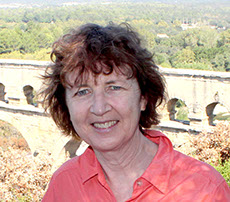 Relative Importance of Climate and Humans on Water Storage Changes using GRACE Satellite Data
Relative Importance of Climate and Humans on Water Storage Changes using GRACE Satellite Data
Bridget R. Scanlon
Dr. Bridget R. Scanlon is among the leading hydrogeologists and conducts research at the Bureau of Economic Geology at the University of Texas at Austin. Her early research concentrated on groundwater recharge, using monitoring, chemical and isotopic tracers, and numerical modelling. She has examined the impacts of climate change and land use change on groundwater, sources and mitigation of natural and anthropogenic contamination, and managed aquifer recharge. Recent research with very high scientific impact includes the interdependence of water and energy and the reliability of global models using GRACE satellite data. Bridget Scanlon has published about 150 papers in refereed journals. She was a Birdsall-Dreiss Distinguished Lecturer and received the M. King Hubbert Award from NGWA and the President’s Award from the International Association of Hydrogeologists. She is a member of the U.S. National Academy of Engineering.
Public Evening Lecture
Monday, 20 September 2021 | 19:00-20:00 h (CET)
Geology on Mars (click for details)NASA's Mars Science Laboratory mission, with its Curiosity rover, has been exploring Gale crater since 2012 with the goal of assessing its potential to support life. The mission has compiled compelling evidence that the crater basin accumulated sedimenttransported by marginal rivers into lakes that likely persisted for millions of years in the early Hesperian. Fluids simultaneouslycirculated in the subsurface and likely existed through the dry phases of lake bed exposure and eolian deposition creating acontinuously habitable deep biosphere environment that persisted of millions to even hundreds of millions of years, conceivably even into early Amazonian time. Geochemical and mineralogical assessments indicate that ancient environmental conditions would have been suitable for sustaining life, if it ever were present. A diversity of organic molecules has been preserved, though degraded, with evidence for more complex precursors. In situ studies of modern wind-driven sediment transport and multiple large and active aeolian deposits have led to advances in physical theory of boundary conditions and bedform development. Despite 9 years of exploration, rover systems and science instruments remain healthy and capable of performing all key scientific objectives.
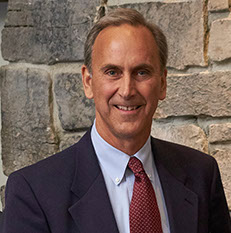 John P. Grotzinger
John P. Grotzinger
Dr. John P. Grotzinger is the Harold Brown Professor of Geology, Division of Geological and Planetary Sciences, California Institute of Technology. He was named chair of the Division of Geological and Planetary Scienes in June 2015. He served as chief scientist for NASA's Mars Rover Curiosity mission and is currently a science Co-Investigator on the Perseverence Rover mission. Dr. Grotzinger's research involves the comparative evolution of Earth and Mars in characterizing the origin and early evolution of life on Earth, and the search for biosignatures on Mars. He is a member of the US National Academy of Science, the American Academy of Arts and Sciences, a recipient of NASA's Outstanding Public Service Medal, and the Halbouty Award of the American Assocation of Petroleum Geologists. Dr. Grotzinger is a graduate of Hobart College (BS), the University of Montana (MS) and Virginia Polytechnic Institute (PhD). He served as a professor at MIT for 18 years, moving to Caltech in 2005.
DGGV Awardees 2020/2021
- Thorsten Nagel (Aarhus University, Denmark) | Eugen-Seibold-Medaille 2020
- Hella Wittmann-Oeltze (GFZ Potsdam, Germany) | Eugen-Seibold-Medaille 2021
- Gerhard Bohrmann (MARUM, Germany) | Gustav-Steinmann-Medaille 2020
- Mark Handy (FU Berlin, Germany) | Gustav-Steinmann-Medaille 2021
- Laura Stutenbecker (TU Darmstadt, Germany) | Hans-Cloos-Preis/Stipendium 2020
- Yvonne Spychala (Uni Hannover, Germany) | Hans-Cloos-Preis/Stipendium 2021
- Gabriel Rau (KIT, Germany) | Hermann-Credner-Preis/Stipendium 2021
- Gillian Foulger (Durham University, UK) | Leopold-von-Buch-Plakette 2020
- Garzanti Eduardo Aldo Franco (University of Milano-Bicocca, Italy) | Leopold-von-Buch-Plakette 2021
- Theo Simon (Gesellschaft für Naturkunde in Württemberg e.V., Germany) | Serge-von-Bubnoff-Medaille 2020
- Goesta Hoffmann (Uni Bonn, Germany) | Serge-von-Bubnoff-Medaille 2021
- Jan-Michael Lange (Senckenberg Naturhistorische Sammlungen Dresden, Germany) | Serge-von-Bubnoff-Medaille 2021
- Walter Riegel (GWDG, Germany) | Rolf+Marlies Teichmüller Preis 2020
- Jochen Rascher (GEOmontan Freiberg, Germany) | Rolf+Marlies Teichmüller Preis 2021
Awards
The DGGV would like to offer a best presentation award and a best poster award for young geoscientists
(students and PhD students).
Best PRESENTATION AWARD: Three best oral presentations of (PhD) students will be selected by a jury and awarded.
The selected oral presentations will be awarded during the Closing Session on Thursday, 23/Sept/2021: 5:45 pm - 6:00 pm.
If you would like to apply for this:
- You need to upload your PPT in ConfTool here by 30 August so that the jury can get information and plan in time. This PPT is only for the jury and would not be published!
- You have to be present at the virtual closing ceremony on Thursday, September 23| 5:45 pm – 6:00 pm.
Best POSTER AWARD: Three best posters of (PhD) students will be selected by a jury and awarded. The selected posters will be awarded during the Closing Session on Thursday, September 23| 5:45 pm – 6:00 pm.
You have to be present at the virtual closing ceremony on Thursday, September 23| 5:45 pm – 6:00 pm.
ORGANIZING COMMITTEE
Christoph Hilgers | chairman
Jochen Kolb
Agnes Kontny
Frank Schilling
Armin Zeh
REGISTRATION

The fees for the on-site excursions here.
Terms for registration and cancellation:
- The registration of participation is binding.
- Fees for field trips will not be reimbursed (unless the field trip is cancelled).
- If you have to cancel the registration, you get 100% back until 30 days before the start of the conference (minus € 20 handling fee!). In all other cases, the financial responsibilities of the participants remain fully effective.
- The participation fees are owed upon registration and are payable within 8 days following submission of the registration.
- Participation is not guaranteed until full payment of the registration fee is received.
- Payments will be refunded if the conference will be cancelled by the organizers. In that case, the organizers will have no further liability to the client. Registrations remain valid if the conference has to be postponed.
- The conference program may be subject to changes.
- I agree to be informed about all matters of this conference by the organizers via e-mail.
Privacy policy and the code of conduct:
With your registration you allow the organizers of the conference to use your data for the preparation of the congress (e.g. import into the web software used, which is necessary for your participation in the conference). The data will not be passed on to other parties.
I confirm that I have read and accepted the following conference privacy policy:
Privacy statement of the operator of this ConfTool installation, DGGV, conference apps SCOOCS and Wonder.me, video conference software BigBlueButton, Zoom and the video platform YouTube, as well as our Code of Conduct.
Sponsoring | Exhibitors
for information in German, please see below
On our conference platform Scoocs, our exhibitors and sponsors have designed their virtual 3D booth in a very
appealing way. Here you can get in touch with the companies and get comprehensive information about them. Most
companies also have a booth person who will be happy to answer your questions directly in a 1:1 chat or you can arrange appointments for a virtual meeting.
This extensive virtual exhibition on our conference platform Scoocs is open to all registered participants. Are you
interested but not yet registered? Click here to register.
GOLD SPONSORS
 SILVER SPONSORS
SILVER SPONSORS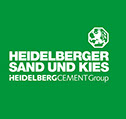

![]()
![]() BRONZE SPONSORS
BRONZE SPONSORS![]()

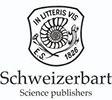
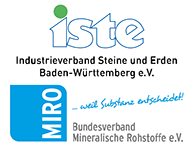
We're excited to offer you the following services for your sponsoring / exhibition marketing:
1. Your logo on the conference website Platinum Gold Silver Bronze
2. Virtual booth with meeting facility Platinum Gold Silver Bronze
3. Credits during conference opening Platinum Gold Silver Bronze
4. Credits in a conference mailing Platinum Gold Silver Bronze
5. Broadcasting of your video (3 min max.) Platinum Gold Silver
6. Your logo linked to your own subpage / your website Platinum Gold Silver
7. 45 min company event (course or so) Platinum Gold
8. Article on DGGV Facebook page Platinum
Sponsoringkatalog herunterladen
Wir freuen uns, Ihnen für Ihr Sponsoring / Ausstellungsmarketing den folgenden Service anzubieten:
1. Ihr Logo auf der Tagungswebseite Platin Gold Silber Bronze
2. Virtueller Stand mit Meetingraum Platin Gold Silber Bronze
3. Wertschätzende Nennung in der Konferenz Eröffnungszeremonie Platin Gold Silber Bronze
4. Wertschätzende Nennung im Konferenzmailing Platin Gold Silber Bronze
5. Präsentation Ihres Videos (max. 3 min) Platin Gold Silber
6. Logoverlinkung mit Ihrer eigenen Unterseite auf der Tagungswebseite oder mit Ihrer eigenen URL Platin Gold Silber
7. 45-minütiges Firmenevent (Kurs o.ä.) Platin Gold
8. Ein Facebook-Artikel auf der DGGV-Website Platin
European Geothermal Workshop | EGW 2021
23–24 September 2021
GeoKarlsruhe 2021 is excited to be held together with the European Geothermal Workshop 2021. EGW abstracts are handled via our GeoKarlsruhe website (details here), and online registration is available here together with the GeoKarlsruhe 2021 registration (here).


CONTACT
F&U confirm
Permoserstraße 15
04318 Leipzig | Germany
